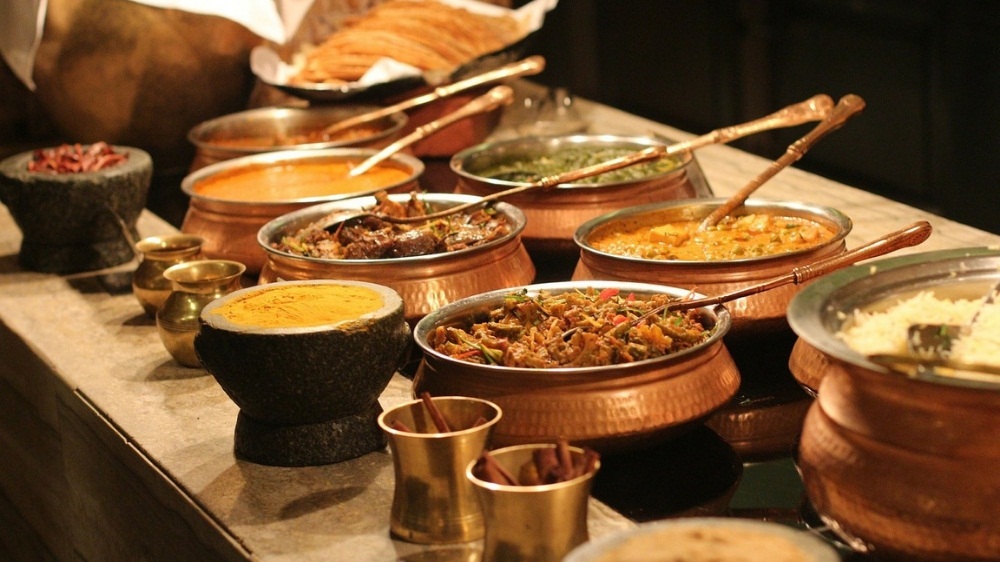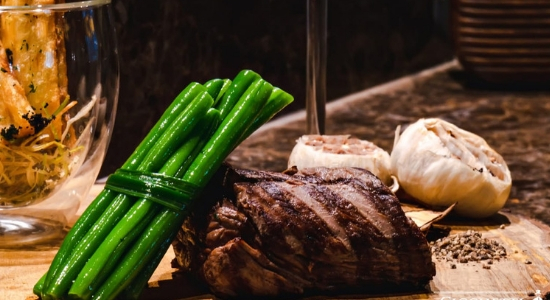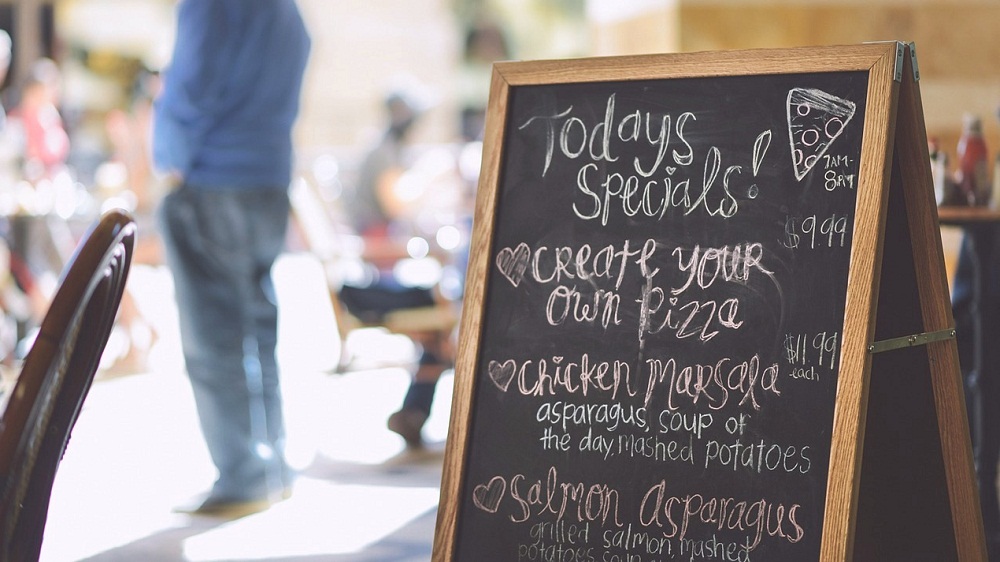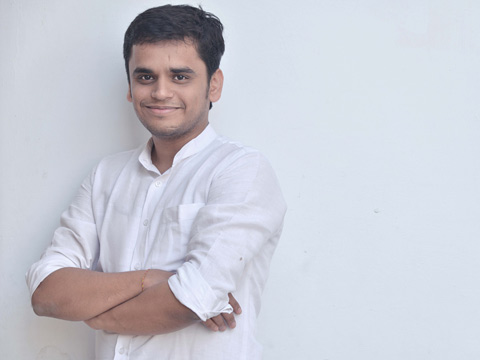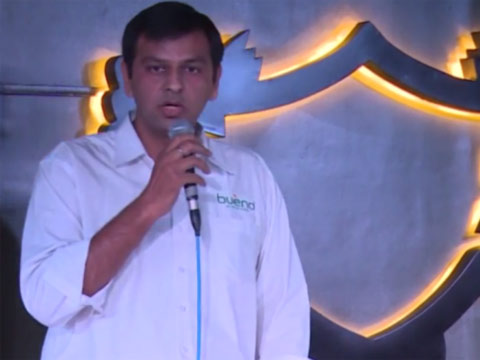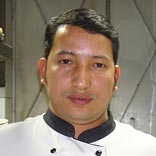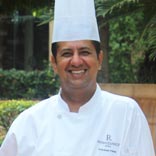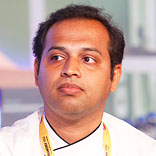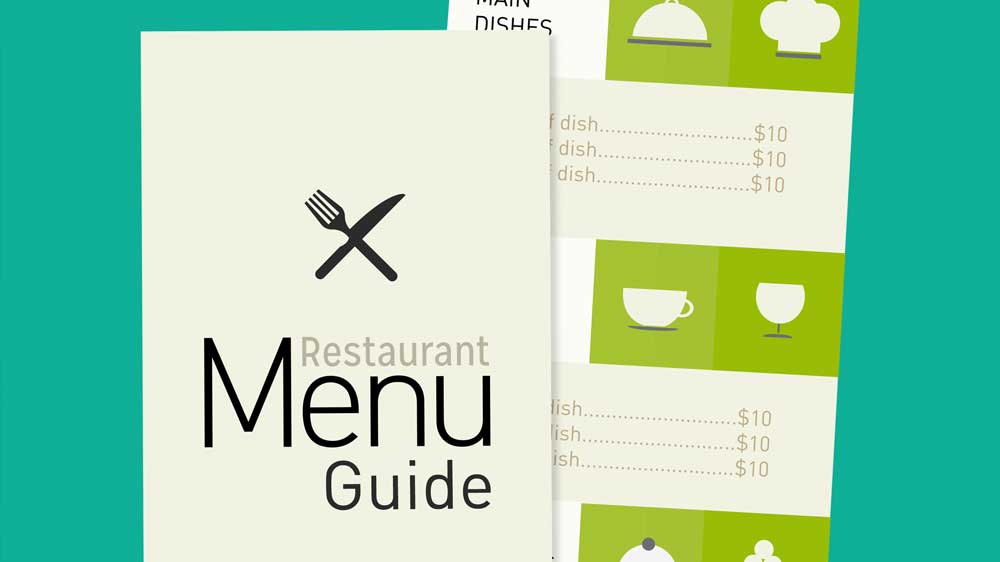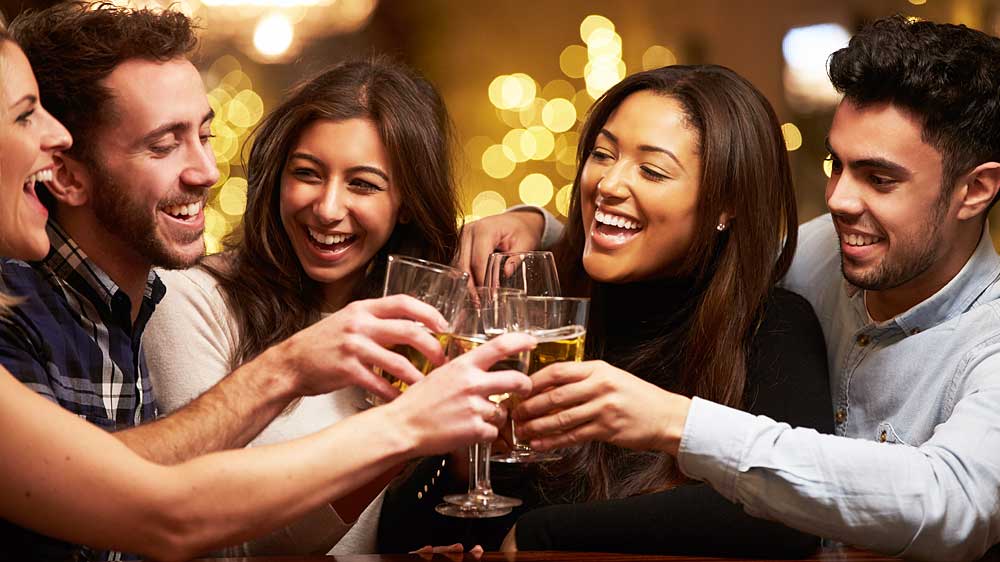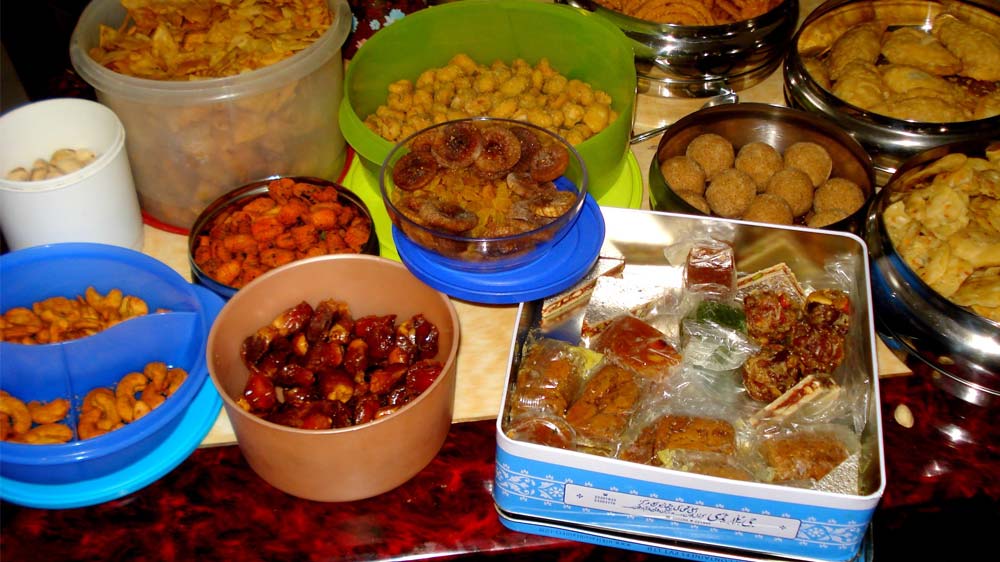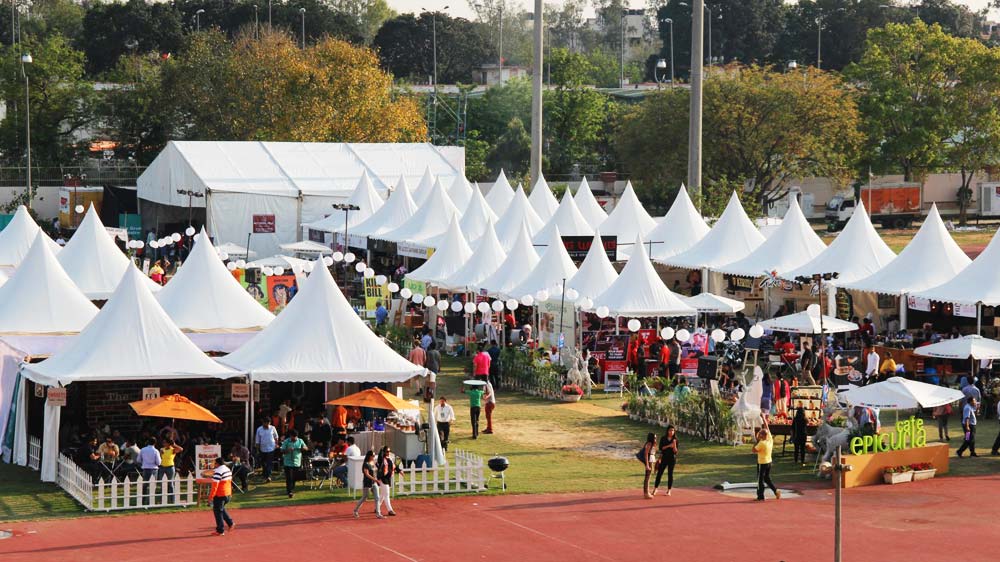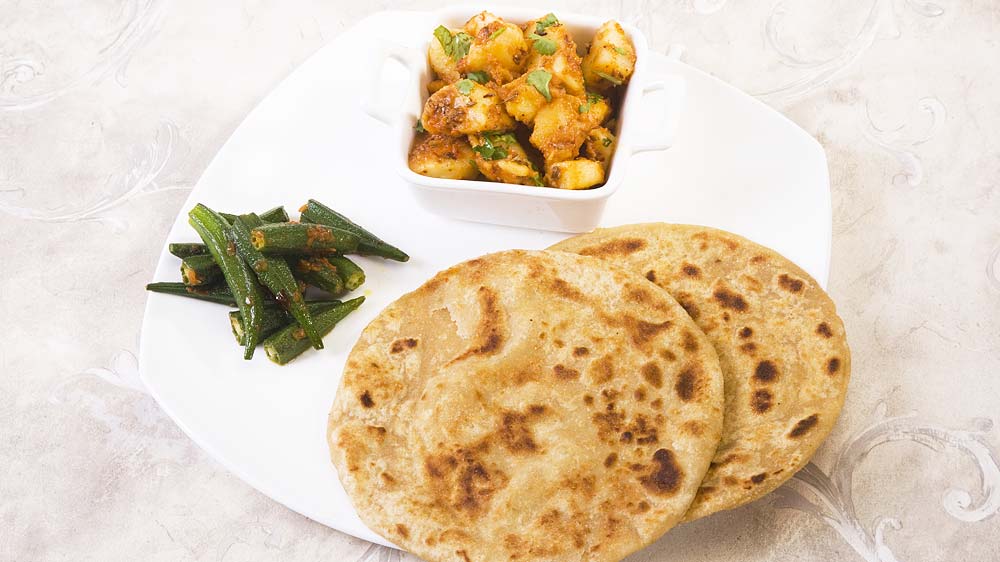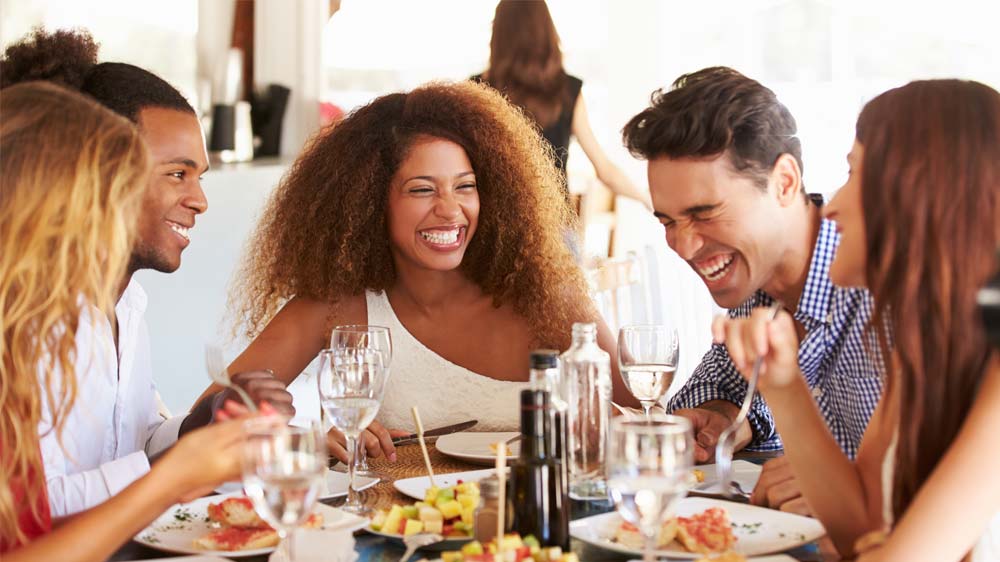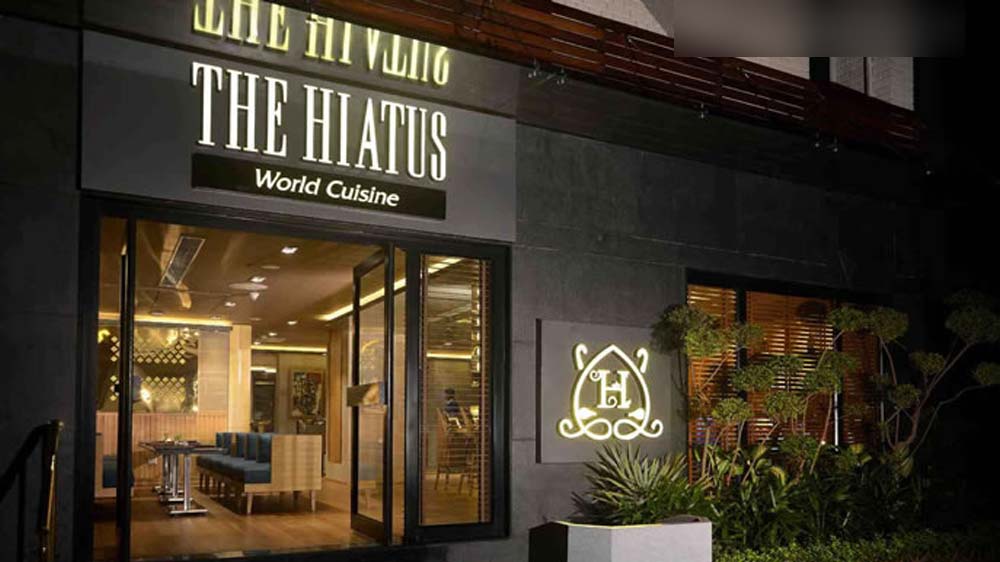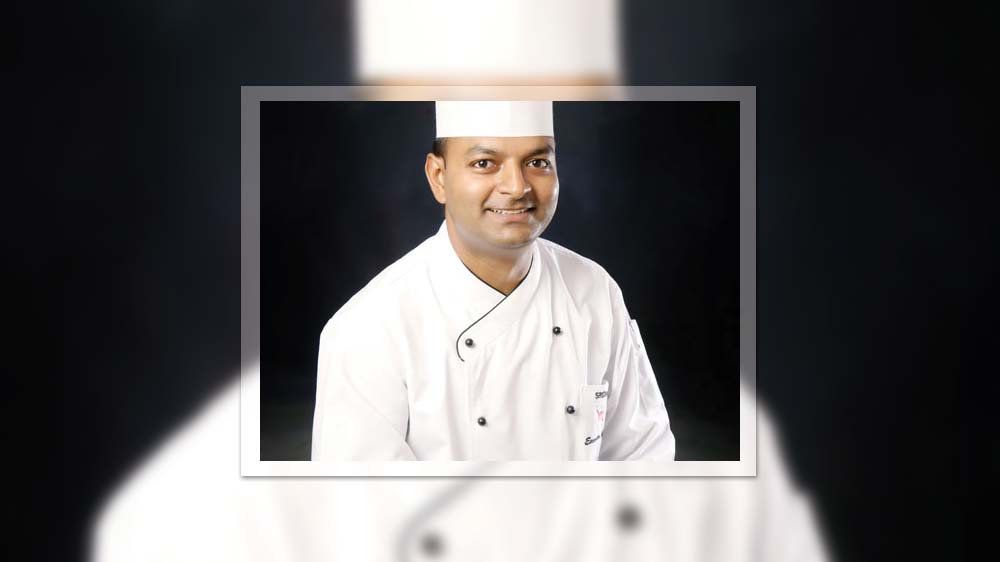
Crafting a compelling dessert menu is crucial for your restaurant’s success, helping you attract customers and create a memorable dining experience. Whether you're looking to introduce innovative flavors, incorporate seasonal ingredients, or cater to the rising demand for healthier options, a well-thought-out dessert selection can set your establishment apart. In today’s digital era, where social media plays a vital role in shaping dining trends, visually appealing desserts can boost your brand's online presence and drive customer engagement. Staying ahead in the competitive food industry requires a strategic approach that blends creativity with profitability, ensuring your menu remains fresh and exciting.
At Restaurant India, we understand the evolving needs of restaurateurs like you. From indulgent classics to modern, health-conscious options, the right dessert menu can elevate your brand, enhance customer loyalty, and increase revenue. Whether you’re planning a seasonal refresh, curating special event offerings, or looking to meet changing consumer preferences, this guide will provide creative dessert ideas to help you stay ahead in the game.
Why Your Dessert Menu Matters
A great dessert menu does more than satisfy sweet cravings—it enhances your restaurant’s brand identity and leaves a lasting impression on diners. Here’s why investing in innovative dessert options is essential:
- Menu Innovation & Fresh Ideas: Regularly updating your dessert offerings keeps customers intrigued and encourages repeat visits.
- Seasonal Menu Updates: Incorporating fresh, seasonal ingredients allows you to offer limited-time specials that create excitement and boost sales.
- Catering to Dietary Trends: With growing demand for vegan, gluten-free, and low-sugar options, adapting to dietary preferences can attract a broader audience.
- Social Media Appeal: Visually stunning desserts can go viral, helping to market your restaurant organically and increase foot traffic.
- Profit Maximization: Creative yet cost-effective dessert options can enhance margins while delivering high perceived value to guests.
10 Dessert Menu Ideas for Restaurants to Impress Customers
Here are ten creative and delicious dessert ideas that can add excitement to your restaurant’s menu and leave your guests wanting more:
1. Decadent Chocolate Symphony

A trio of chocolate delights featuring dark chocolate lava cake, milk chocolate mousse, and white chocolate gelato, served with a drizzle of raspberry coulis and edible gold flakes. Perfect for indulgent customers who crave a rich chocolate experience.
2. Exotic Fruit Fantasy

A refreshing tropical fruit carpaccio with passion fruit sorbet, dragon fruit slices, and coconut granita, enhanced with a hibiscus-infused syrup. Ideal for health-conscious diners seeking a light yet flavorful treat.
3. Deconstructed Tiramisu

A modern take on the classic Italian favorite, featuring espresso-soaked ladyfingers, mascarpone mousse, cocoa dust, and coffee gelato, elegantly layered for a contemporary presentation.
4. Salted Caramel & Pretzel Cheesecake

A creamy cheesecake with a crunchy pretzel crust, topped with silky salted caramel sauce and candied pecans for a sweet and salty flavor balance.
5. Matcha & Black Sesame Delight

Layers of matcha sponge cake, black sesame mousse, and yuzu curd, topped with a delicate white chocolate glaze for an Asian-inspired fusion dessert.
6. Gourmet Donut Flight

An assortment of mini donuts in unique flavors such as crème brûlée, red velvet, and classic cinnamon sugar, served with dipping sauces for a fun and interactive experience.
7. Classic Baked Alaska with a Twist

A modern version of the timeless Baked Alaska, featuring layers of vanilla bean ice cream, raspberry sorbet, and almond sponge, topped with flambéed meringue at the table for added drama.
8. Pistachio Rose Baklava Tart

A fusion of Mediterranean flavors, featuring crisp layers of filo pastry, rich pistachio filling, and a fragrant rose water drizzle, offering a unique twist on traditional baklava.
9. Molten Peanut Butter Chocolate Cake

A warm chocolate cake with a gooey peanut butter center, served with vanilla bean ice cream and caramelized banana slices, perfect for dessert lovers who enjoy rich, comforting flavors.
10. Vegan Coconut Chia Pudding

A creamy coconut milk chia pudding topped with seasonal berries, toasted coconut flakes, and a drizzle of maple syrup—ideal for health-conscious and plant-based diners.
Tips for Successfully Implementing These Dessert Ideas
To make the most of these dessert ideas, consider the following strategies:
- Focus on Presentation: Invest in eye-catching plating and garnishes to create desserts that are as beautiful as they are delicious.
- Leverage Seasonal Ingredients: Using locally sourced, in-season produce not only enhances flavor but also supports sustainability.
- Offer Pairing Suggestions: Recommend dessert wines, specialty coffees, or cocktails that complement your sweet treats.
- Create Limited-Time Specials: Seasonal or event-based dessert offerings can generate excitement and increase sales.
- Train Your Staff: Ensure your team is well-versed in describing and serving desserts to enhance the guest experience.
Final Thoughts
A well-curated dessert menu can do wonders for your restaurant’s success, attracting new customers, driving social media engagement, and boosting overall revenue. Whether you're looking to stay ahead of food trends, introduce unique offerings, or simply satisfy your customers' sweet cravings, these dessert ideas provide the perfect inspiration.
At Restaurant India, we are dedicated to helping restaurateurs like you create exceptional dining experiences that leave a lasting impact. Start incorporating these dessert ideas into your menu today and watch your business flourish.

Are you a coffee enthusiast seeking your perfect Starbucks fix in the bustling metropolis of Delhi? Look no further! This comprehensive guide will take you through everything you need to know about Starbucks locations across the capital city, complete with detailed menu insights, calorie information, and insider tips to enhance your coffee experience.
Why Delhi Loves Starbucks
Have you ever wondered why Starbucks has become such an integral part of Delhi's coffee culture? The answer lies in their perfect blend of global coffee expertise and localized offerings that cater specifically to Indian tastes. Whether you're looking for a quiet corner to work, a meeting spot, or simply a place to enjoy premium coffee, Starbucks has positioned itself as the go-to destination across Delhi.
Starbucks Locations Across Delhi: Find Your Nearest Store
Central Delhi: The Heart of the City
Central Delhi boasts some of the most visited Starbucks outlets, perfectly positioned for both tourists and locals alike:
-
Connaught Place (N Block): Located at Shop No 16, N Block, Outer Circle, this flagship store remains open until 11:45 PM, making it perfect for late-night coffee cravings.
-
Connaught Place (Hamilton House): At No A 1, Hamilton House, this centrally located store also stays open until 11:45 PM, serving the busy CP crowd with efficiency.
-
Shivaji Stadium Metro: Positioned at the Mezzanine Level on Baba Kharak Singh Marg, this transit-friendly location operates until 7:00 PM, catering to commuters.
South Delhi: Premium Coffee Experience
South Delhi's Starbucks outlets offer a more relaxed atmosphere in some of the city's most upscale neighborhoods:
-
Khan Market: Found at No A45, 1st & 2nd Floor, Barsati, this outlet in one of Delhi's most expensive markets stays open until 11:45 PM.
-
Delhi High Court: The ground floor location at Delhi High Court, Bapa Nagar serves legal professionals and visitors until 10:00 PM.
-
Nehru Place: Situated on the Lower Ground Floor of Eros Corporate Tower, this business district location serves until 11:00 PM.
-
Epicuria Food Mall: Near Nehru Place Metro Station, this food hub location offers an average cost of ₹900 for two people.
West Delhi: Comfort and Convenience
West Delhi residents can enjoy their favorite Starbucks beverages at:
-
Pusa Road: At Plot No 3, Ground Floor, Block 18A, Karol Bagh, this location serves until 11:30 PM.
-
Paschim Vihar: Located in Reserve Bank Enclave, this outlet caters to West Delhi residents.
Additional Notable Locations
- Hauz Khas Village: Operating from 10 AM to 11 PM
- R.K. Puram: Sangam Courtyard, Sector 9, open from 10 AM to 12 AM
- Kamla Nagar: First Floor, Spark, MLCP
- Lajpat Nagar: I-1, Central Market
- Greater Kailash Part 1 & 2
- South Extension: E-29, 1st Floor, South Ex – II
- Delhi Airport: Both T3 Domestic Departure and T3 International Terminal
Understanding the Starbucks Size Guide
Before diving into the extensive menu, it's helpful to understand Starbucks' distinctive sizing system:
| Size | Volume | Notes |
|---|---|---|
| Short | 237ml | Limited availability |
| Tall | 354ml | Standard small size |
| Grande | 473ml | Standard medium size |
| Venti | 591ml | Standard large size |
Exploring the Starbucks Delhi Menu
Espresso-Based Beverages: The Foundation of Excellence
Starbucks built its reputation on exceptional espresso, and these signature drinks continue to be bestsellers in Delhi:
| Menu Item | Description | Calories | Size Options |
|---|---|---|---|
| Americano | Espresso shots topped with hot water | 0 kcal (all sizes) | Short (237ml), Tall (354ml), Grande (473ml), Venti (591ml) |
| Cappuccino | Espresso with steamed milk and a thick layer of foam | 120 kcal (Grande) | Short, Tall, Grande (473ml), Venti |
| Caffe Latte | Espresso with steamed milk | 150 kcal (Tall) | Tall (12oz), Grande, Venti |
| Caramel Macchiato | Vanilla-flavored milk marked with espresso and caramel drizzle | 255 kcal (Tall), 250-333 kcal (Grande) | Tall (354ml), Grande (476ml), Venti |
| Flat White | Ristretto shots of espresso with steamed milk | Varies by size | Short, Tall, Grande, Venti |
The Americano offers the pure coffee experience without any calories, making it your go-to option if you're looking for a low-calorie, high-caffeine beverage that showcases the true character of Starbucks coffee beans.
The Cappuccino combines espresso with steamed milk and a thick layer of foam, creating the perfect balance of strength and creaminess. A Grande size contains approximately 120 calories, making it a relatively light option for those watching their intake.
The Caramel Macchiato is a fan favorite with its vanilla-flavored milk marked with espresso and caramel drizzle. This beverage offers the perfect introduction for those new to espresso drinks, with the sweetness balancing the coffee's intensity.
Cold Coffee Creations: Beat the Delhi Heat
Delhi's scorching summers make these cold coffee options particularly popular:
| Menu Item | Description | Calories | Size Options |
|---|---|---|---|
| Cold Coffee | Chilled coffee with milk and ice | 362 kcal (Tall), 473 kcal (Grande), 501 kcal (Venti) | Tall (354ml), Grande (473ml), Venti (591ml) |
| Vanilla Sweet Cream Cold Brew | Cold brew topped with house-made vanilla sweet cream | 110 kcal (Grande) | Grande (473ml) |
| Cold Brew with Ginger Ale | Double layered cold brew beverage with ginger ale | 141 kcal (Tall), 152 kcal (Grande), 162 kcal (Venti) | Tall (354ml), Grande (431ml), Venti (591ml) |
Cold Coffee features chilled coffee with milk and ice, offering a refreshing yet satisfying experience.
Vanilla Sweet Cream Cold Brew features cold brew topped with house-made vanilla sweet cream, making it a relatively lighter option for a flavored cold coffee.
The innovative double-layered cold brew with ginger ale offers a unique flavor profile that's rapidly gaining popularity among Delhi's coffee enthusiasts.
Frappuccino Range: Blended Beverages for Every Taste
Starbucks Frappuccinos remain wildly popular in Delhi, offering a dessert-like beverage experience:
| Menu Item | Description | Calories | Size Options | Allergens |
|---|---|---|---|---|
| Coffee Frappuccino | Coffee blended with milk and ice | 208.6 kcal (Tall), 240-306.87 kcal (Grande), 391.98 kcal (Venti) | Tall (354ml), Grande (475ml), Venti (591ml) | Milk |
| Java Chip Frappuccino | Mocha sauce and Frappuccino chips blended with coffee, milk and ice | 391.7 kcal (Tall), 440-536.19 kcal (Grande), 667.4 kcal (Venti) | Tall (354ml), Grande (473ml), Venti (591ml) | Milk, Soy |
| Caramel Frappuccino | A blend of coffee, caramel syrup, milk and ice | 364.5 kcal (Tall), 485.42 kcal (Grande), 510-601.65 kcal (Venti) | Tall (354ml), Grande, Venti (700ml) | Milk |
| Mocha Cookie Crumble Frappuccino | Blended coffee meets chocolate and cookies | 420 kcal (Tall), 620 kcal (Grande), 778 kcal (Venti) | Tall (354ml), Grande (431ml), Venti (591ml) | Milk, Soy, Wheat |
| Double Chocolate Chip Frappuccino | Mocha-flavored sauce with chocolaty chips, milk and ice | 414.9 kcal (Tall), 580.35 kcal (Grande), 729.42 kcal (Venti) | Tall (354ml), Grande (473ml), Venti (591ml) | Milk, Soy |
| Green Tea Cream Frappuccino | Sweetened matcha green tea, milk and ice | 412.4 kcal (Tall), 575.94 kcal (Grande), 726.64 kcal (Venti) | Tall (354ml), Grande (473ml), Venti (591ml) | Milk |
| Strawberries & Crème Frappuccino | Strawberries and milk blended with ice | 530.2 kcal (Tall), 752.87 kcal (Grande), 962.58 kcal (Venti) | Tall (354ml), Grande (473ml), Venti (591ml) | Milk |
The Java Chip Frappuccino is consistently one of the most popular Frappuccino options in Delhi stores, offering the perfect indulgence for chocolate lovers.
The Mocha Cookie Crumble Frappuccino blends coffee with chocolate and cookies for a decadent treat that's worth every calorie.
The Strawberries & Crème Frappuccino offers a non-coffee option that's particularly popular during summer months, providing a refreshing and sweet experience.
Seasonal and Specialty Beverages: Limited-Time Treasures
Starbucks Delhi regularly introduces special beverages that create excitement among coffee enthusiasts:
| Menu Item | Description | Calories | Size Options |
|---|---|---|---|
| Stardust Macchiato | Vanilla half and half crowned with cold foam, marked with ristretto shot and cocoa dust | 541 kcal (Short), 643 kcal (Tall) | Short (237ml), Tall (354ml) |
| Iced Stardust Macchiato | Iced version served over ice | 386 kcal (Tall) | Tall (354ml) |
| Mango Dragonfruit Refresher | Lemonade with mango and dragonfruit flavors with diced dragonfruit | 102 kcal (Tall), 131 kcal (Grande), 160 kcal (Venti) | Tall (354ml), Grande (431ml), Venti (591ml) |
| Pumpkin Spice Latte (Seasonal) | Espresso with pumpkin spice flavoring and milk | 470 kcal (Venti) | Venti (20ml) |
The Stardust Macchiato features vanilla half and half crowned with cold foam, marked with ristretto shot and cocoa dust for a truly unique experience.
The Mango Dragonfruit Refresher combines lemonade with mango and dragonfruit flavors with diced dragonfruit, making it perfect for Delhi summers when you need hydration with a flavorful twist.
The legendary Pumpkin Spice Latte features espresso with pumpkin spice flavoring and milk. This seasonal treat is eagerly anticipated by Delhi's Starbucks enthusiasts every year.
Food Menu: Perfect Pairings for Your Coffee
| Category | Menu Item | Description | Calories | Size/Quantity | Allergens | Price (₹) |
|---|---|---|---|---|---|---|
| Bakery Items | Almond Biscotti | Crunchy twice-baked cookie with almonds | 102 kcal per 25g | 50g | Nuts, Wheat, Egg, Milk | 152 |
| Classic Cinnamon Swirl | Veg pastry with cinnamon swirl | Not specified | Not specified | Wheat, Dairy | Not specified | |
| Butter Croissant | Classic buttery layered pastry | Not specified | Not specified | Wheat, Dairy | Not specified | |
| Snacks and Nuts | Roasted & Salted Almonds | Premium roasted and lightly salted almonds | 158 kcal per 25g | 50g | Nuts | 171 |
| Roasted & Salted Cashews | Premium roasted and lightly salted cashews | 152 kcal per 25g | 50g | Nuts | 171 | |
| Sandwiches | Chicken Salad Sandwich | Sandwich filled with chicken salad | 574 kcal | 175g | Not specified | Not specified |
| Chilli Chicken in English Muffin | English muffin filled with spicy chicken | 529 kcal | 160g | Not specified | Not specified | |
| Egg & Mayo Sandwich | Classic sandwich with egg and mayonnaise | Not specified | Not specified | Egg, Dairy | Not specified | |
| Bhuna Chicken Puff | Flaky pastry filled with spiced chicken | Not specified | Not specified | Not specified | Not specified | |
| Beverages | Himalayan Still Water | Natural mineral water | 0 kcal | 300ml | None | 119 |
The Almond Biscotti is a crunchy twice-baked cookie with almonds that makes for a perfect companion to your coffee.
The Classic Cinnamon Swirl is a vegetarian pastry with a delicious cinnamon swirl that contains wheat and dairy allergens.
The Chicken Salad Sandwich is a hearty option filled with chicken salad that contains 574 calories per 175g serving.
Himalayan Still Water with 0 calories in a 300ml bottle is always available if you need pure refreshment alongside your coffee.
Making the Most of Your Starbucks Delhi Experience
Best Times to Visit
If you're looking to avoid crowds, consider visiting:
- Weekday mornings (before 9 AM): Perfect for a peaceful start
- Mid-afternoons (2-4 PM): The post-lunch lull offers shorter lines
- Late evenings (after 8 PM): Most locations remain open late
Starbucks Rewards Program
Did you know you can earn stars for every purchase at Starbucks Delhi? The Starbucks Rewards program offers:
- Free drinks
- Birthday rewards
- Exclusive offers
- Special member events
Sign up through the Starbucks app or website to start earning benefits with each visit.
Customization Options: Create Your Perfect Beverage
Starbucks Delhi offers extensive customization options:
- Milk alternatives: Soy, almond, and oat milk available
- Sweetness levels: Request less syrup or sugar-free options
- Espresso modifications: Extra shots, decaf options
- Temperature adjustments: Extra hot or less ice
Don't hesitate to ask your barista to create your perfect beverage!
Conclusion: Why Starbucks Continues to Thrive in Delhi
Starbucks has successfully established itself as a premium coffee destination across Delhi by combining its global coffee expertise with local sensibilities. From the business districts of Connaught Place to the shopping hubs in South Delhi and residential areas in West Delhi, Starbucks ensures its signature offerings are widely available to coffee enthusiasts.
The extensive menu caters to diverse preferences with options ranging from zero-calorie black coffees to indulgent frappuccinos, along with a selection of bakery items, sandwiches, and snacks. Most locations offer extended operating hours, with some stores in central areas like Connaught Place remaining open until almost midnight, making Starbucks a reliable destination for coffee and quick bites throughout the day.
Whether you're a coffee connoisseur or casual sipper, Starbucks Delhi offers something for everyone in an atmosphere that encourages both productivity and relaxation. The next time you need your coffee fix in the capital, you know exactly where to go and what to order!

Have you ever wondered what to order when you walk into a Starbucks in Ahmedabad? With so many choices on the menu, finding your perfect brew can feel overwhelming. This guide will help you navigate the Starbucks menu in Ahmedabad with confidence, whether you're a coffee connoisseur or a casual visitor.
Understanding the Starbucks Experience in Ahmedabad
Starbucks offers a unique coffee experience that blends global standards with local flavors. When you visit any of the Ahmedabad locations, you'll find a wide variety of hot beverages, cold drinks, frappuccinos, and food items to satisfy your cravings.
Starbucks Locations in Ahmedabad
Starbucks has expanded its presence across Ahmedabad to serve coffee lovers throughout the city. You can find Starbucks at these locations:
- Bodakdev - A popular location serving the western part of the city
- Prahlad Nagar - Convenient for residents and professionals in this business district
- Vastrapur - Located in One Mall, perfect for shoppers
- Navrangpura - Central location serving the heart of the city
- CG Road - Situated in the commercial hub
- Thaltej - Serving residents of this upscale neighborhood
- Science City Road - Convenient for those near Sola and Science City area
- Phoenix Palladium Mall - Located in Ghatlodiya, perfect for mall visitors
- Sindhu Bhavan Road - Located at the Taj Skyline
- Kudasan - Serving the Gandhi Nagar area
Starbucks Size Guide
Before diving into the menu, it's helpful to understand Starbucks' distinctive sizing system:
- Short: 237ml (limited availability)
- Tall: 354ml
- Grande: 473ml
- Venti: 591ml
Hot Beverages That Warm Your Soul
Espresso-Based Favorites
When you're looking for that perfect coffee kick, Starbucks' espresso-based drinks offer rich, aromatic flavors that can be customized to your taste preferences.
| Menu Item | Description | Calories | Size Options | Price (₹) |
|---|---|---|---|---|
| Caramel Macchiato | Espresso poured over steamed milk with vanilla syrup and caramel drizzle | 162-426 kcal | Short (237ml), Tall (354ml), Grande (473ml), Venti (591ml) | 335 |
| White Chocolate Mocha | Espresso with steamed milk sweetened with white chocolate sauce | 252-564 kcal | Short (237ml), Tall (354ml), Grande (473ml), Venti (591ml) | 325 |
| Caffè Latte | Classic espresso beverage with steamed milk | 150 kcal | Tall (354ml) | 235-280 |
| Espresso | Pure, concentrated coffee | Minimal | Standard shot | 215 |
| Flat White | Ristretto shots with steamed whole milk | Not specified | Standard | 295 |
| Cappuccino | Espresso with steamed milk and foam | 60 kcal (tall, nonfat) | Tall (354ml) | 260 |
| Caffè Americano | Espresso shots topped with hot water | 10 kcal | Tall (354ml) | 215 |
Tea & Other Hot Beverages
Not in the mood for coffee? Try these comforting alternatives that offer unique flavor profiles.
| Menu Item | Description | Calories | Size Options | Price (₹) |
|---|---|---|---|---|
| Chai Tea Latte | Black tea with warming spices and steamed milk | 160 kcal (tall, soy) | Tall (354ml) | 240 |
| Green Tea Latte | Sweetened matcha with steamed milk | Not specified | Standard | 240 |
| Signature Hot Chocolate | Rich mocha sauce in steamed milk with whipped cream | Not specified | Standard | 240 |
Refreshing Cold Beverages
Iced Coffee & Cold Brew
When Ahmedabad's weather calls for something cool, these refreshing coffee options provide the perfect pick-me-up.
| Menu Item | Description | Calories | Size Options | Price (₹) |
|---|---|---|---|---|
| Cold Brew Black | Slow-steeped, small-batch cold coffee | Not specified | Standard | 280 |
| Iced Brewed Coffee | Chilled coffee with ice and classic syrup | 60 kcal | Tall (354ml) | Varies |
| Iced Skinny Latte | Espresso, skim milk, sugar-free flavoring over ice | 60 kcal | Tall (354ml) | Not specified |
Iced Tea & Refreshers
For a lighter refreshment with vibrant flavors, these options are perfect for hot Ahmedabad days.
| Menu Item | Description | Calories | Size Options | Price (₹) |
|---|---|---|---|---|
| Iced Shaken Hibiscus & Passion Lemonade | Hibiscus and passion fruit with ice and lemonade | Not specified | Standard | 260 |
| Unsweetened Shaken Iced Passion Tea | Passion fruit and hibiscus tea with ice | 0 kcal | Tall (354ml) | Not specified |
| Shaken Iced Tea Lemonade | Tea with ice and lemonade | 100 kcal | Tall (354ml) | Not specified |
Indulgent Frappuccino® Blended Beverages
When you're craving something special, these blended treats combine coffee, milk, ice, and various flavors for a dessert-like experience.
| Menu Item | Description | Calories | Size Options | Price (₹) |
|---|---|---|---|---|
| White Mocha Frappuccino | Coffee with white chocolate, milk, and ice | Not specified | Standard | 315 |
| Mocha Frappuccino | Coffee with mocha sauce, milk, and ice | Not specified | Standard | 315 |
| Caramel Java Chip Frappuccino | Coffee with caramel, chocolate chips, milk, and ice | Not specified | Standard | 355 |
| Vanilla Cream Frappuccino | Vanilla-flavored cream with milk and ice | Not specified | Standard | 295 |
| Caramel Frappuccino Light | Lighter version of caramel frappuccino | 100 kcal | Tall (354ml) | Not specified |
| Coffee Frappuccino | Coffee blended with milk and ice | 180 kcal | Tall (354ml) | Not specified |
Grab-and-Go Bottled Beverages
Need something quick? These convenient options let you enjoy Starbucks flavors on the move.
| Menu Item | Description | Calories | Size | Price (₹) |
|---|---|---|---|---|
| Bottled Coffee Frappuccino | Ready-to-drink bottled Frappuccino | 165 kcal | 250ml | 376 |
| Rauch Blueberry Juice | Refreshing blueberry juice | 60 kcal per 100ml | 200ml | 266 |
| Rauch Apple Juice | Pressed apple juice, no added sugar | 46 kcal per 100ml | 200ml | 238 |
| Rauch Pineapple Juice | Refreshing pineapple juice, no added sugar | 54 kcal per 100ml | 200ml | 238 |
| Himalayan Still Water | Bottled water | 0 kcal | 250ml | 119 |
Delicious Food Options
Snacks & Bakery Items
Pair your beverage with these tasty treats for a complete Starbucks experience.
| Menu Item | Description | Calories | Size | Price (₹) |
|---|---|---|---|---|
| Almond Biscotti | Crunchy Italian cookie | 102 kcal per 25g | 50g | 152 |
| Roasted & Salted Almonds | Premium roasted nuts | 158 kcal per 25g | 50g | 171 |
| Roasted & Salted Cashews | Premium roasted nuts | 152 kcal per 25g | 50g | 171 |
| Almond Butterscotch Cookie | Buttery cookie with almond and butterscotch | 370 kcal | 85g | 285 |
Making the Most of Your Starbucks Visit
How can you get the perfect Starbucks experience in Ahmedabad? Here are some tips:
-
Know your preference: Whether you enjoy something strong like an espresso or creamy like a frappuccino, understanding your taste preference helps narrow down choices.
-
Consider customizations: Starbucks baristas can adjust sweetness levels, milk types, and toppings to suit your taste.
-
Try the most popular items: The Caramel Macchiato and White Chocolate Mocha are customer favorites for good reason.
-
Watch your budget: If you're cost-conscious, the Brewed Coffee is the most affordable option at approximately ₹60.
Conclusion
Your Starbucks journey in Ahmedabad doesn't have to be complicated. With this guide, you now have the knowledge to order confidently and explore new flavors. Whether you're seeking a morning caffeine boost, an afternoon refreshment, or a sweet treat, Starbucks Ahmedabad has something to satisfy your cravings.
Remember that prices may vary slightly between locations, and seasonal or limited-time offerings may be available beyond what's listed here. The next time you visit Starbucks in Ahmedabad, you'll be ready to order like a pro!

There has been a constant debate over the years about what is ‘authentic’ in terms of recipes and flavours and what is not. Innovation in food has taken traditional recipes a step (or many) forward to make them more global or let’s say, locally acceptable, depending on where a restaurant is located. For example, a traditional Chettinad flavour might be too hot or spicy or a lentil from the east may be too runny for someone in the north. So, how does a restaurant make some of the most amazing dishes from different parts of the country more accessible? On the other hand, there are many who may ask why one should tamper with original recipes at all? Even if it is not a coup for the masses, it’s all right as long as it serves its niche and the flavours are not lost in any way.
With the rise of disposable incomes across the country, people like to go out and try new cuisines and have different experiences a lot more than say a decade ago. There are all formats of food joints that have opened all over, be it the metropolitan cities or tiers – I, II and III. With the competition at the highest level, restaurants need to serve the ultimate in taste and quality, along with maintaining their prices as well as manage footfalls constantly. With authenticity being a question at most times that most restaurateurs grapple with, one needs to understand what it means to them.
Let’s find out!
According to Rachna Desai, owner of Chateau de Pondicherry, “Food culture is changing all over the world even within the countries of their origin; recipes are changing and evolving to suit their modern needs. My food is Franco Tamil or Pondicherry style. Now, when the French adopted a Tamil dish they ‘frenchified’ it a lot by adding jaggery to sambhar to mute the chillies and adding white flour to dosa batter to suit their palette, it has been adopted as original Pondicherry food by my restaurant. I would call that authentic; would you?”
“Food culture develops slowly from necessity when cultures collide and populations intermingle and slowly it becomes a cuisine like Anglo Indian cuisine; is that authentic? So, we have to ask ourselves what is authentic! I think if you use local products that are fresh and somewhat organic and you infuse those with a foreign recipe and put your touch and magic to it with love and passion that food is authentic,” she adds.
A lot depends upon the place that you’re catering to, and, to a large extent, cooking styles and personal choices as well. “We source all our food locally, with most of our produce being seasonal and fresh. With the produce is locally sourced, and keeping in mind the palate of the region, the food at our F&B outlets like Fire and Mist carry original recipes, cooked in a style that is most adored by our clientele,” says Corporate Chef, Abhishek Basu, at The Park, New Delhi.
Pikkle has opened its doors to the public a couple of months back and is located in West Delhi, they serve world cuisine, including a wide variety of sushi and dim sums. The owner, Jasneet Sahni, feels, “What’s authentic for me is what I have grown up with; what may be authentic for another person from the same city might be totally different, depending on the taste that she/he has grown up with. As far as possible, the ingredients and quantities have to match the recipes. However, the food served needs to be for the people and the area that the restaurant caters to. I believe in regional Indian food & Ingredients, which is why you will always find a lot of influence of the forgotten ingredients in my food.”
Chef Harangad Singh of Prankster adds, “We Indians are the most innovative species on earth when it comes to food. According to me, there are region-specific ingredients and techniques or methods in India, which are used for a particular dish that we can call a dish prepared with authentic methods. But, I try to stay away from people who ask me to cook authentic food.”
India being a country with numerous cultures and traditions, where the dialect changes every 50-100 kilometres, why should food and cooking styles be any different?
Chef Basu continues, “Our traditional dishes from different parts of the country at Fire are a huge hit with the walk-ins as well as our resident guests. Some of the favourites are Panchkotakisabji, which is a traditional Rajasthani dish, Millet biryani, and Gilnar ki tikki – one of the main ingredients is amaranth (called cholai in Hindi), which grows only in the summers. Even with traditional recipes, cooking styles would still differ; that doesn’t make mine less authentic than anyone else’s. It’s what we love to make and our customers love to come back for again and again.”
Rachna feels that “Authenticity is a challenge every chef must take if the produce of the region allows it. For example, we can procure kokum from the south and make a genuine sambhar or rasam; ferment our rice in a humid temperature and make idlis that are quite close to the Bangalore idlis, and duplicate an Italian pasta with an Indian version of the sweet red Mediterranean tomatoes and use the best Parmigiano Reggiano. So, of course, we should keep it authentic with what ingredients we have and the style of cooking we follow; we need to keep it authentic for ourselves first. If we bend the rules too much and change things around to suit palettes of each of our customers, we will eventually fail since everyone has a different version of authentic. Yes, it’s difficult to maintain a balance but we must keep at it.”
Harangad adds, “In India, there are 40 plus cuisines and some of the tribal cuisines are yet to be discovered. My question is that how have these cuisines come into existence? These cuisines came into existence due to the availability of resources in different regions and also cultural diversities. So, we need to celebrate our cuisines without setting an ‘authentic’ barrier. Yes, the basic ingredients and method need to be given most respect but out cooking styles can vary. Like Japanese say they have umami as one extra flavour, we Indians also have an extra flavour called “chatkora”. I love creating a balance for my dishes by using ingredients which make each dish worth achatkori.”

Cicchetti by Mr Beans is a fun and modern take on classic Italian bistro, aiming to bring ‘Bacari’ culture to India; offering a place where friends and family enjoy a hearty meal over fun conversations in a chic setting.
About the Co-Founders of Cicchetti
Cicchetti by Mr Beans is a brainchild of the husband-wife duo, Abhimanyu Singh and Neha Singh, with the latter being the chef of the bistro. Both are well-travelled restaurateurs with a successful chain of restaurants called Mr Beans to claim upon! On one of their travel, they came across the concept of a bacari and the concept of Cicchetti took birth. They saw the opportunity in giving a rustic and colloquial Venetian experience to the patrons in India in the concept of small Italian plates.
The Bacari Bar Concept at Cicchetti
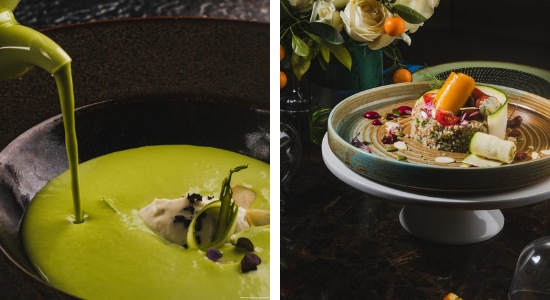
Photo Credits: Cicchetti, Gurugram
Taking inspiration from a tradition that dates back its genesis to the 13th Century Wine Bars of Venice when they added nibbles to the menu to keep the conversation going and hold the crowd longer at the bar. The idea was gradually lost in time but with the evolution of Tapas in Spain, the small courses of Cicchetti sections consisting of cheese boards/bread/jams over house wines and cocktails came back to life again. And that is where the restaurant picked its name Cicchetti (Shi-ke-tti) is a Venetian term for small plates typically served with a glass of native white wine in traditional ‘bacari’ bars located in the by-lanes of the enchanting city of Venice, Italy.
Photo Credits: Cicchetti, Gurugram
As they say “all good things come in small packages”, Cicchetti by Mr Beans is going to give a gourmet makeover to the Venetian small plates wherein one can also make a full meal by ordering multiple portions that are primarily small servings of typical full-course plates. Usually accompanied by a glass of local wine, colloquially referred as an 'ombra', shadow, spritzers and aperol, a Cicchetti acts as a great place for cultural and social bonhomie.
The Menu at Cicchetti
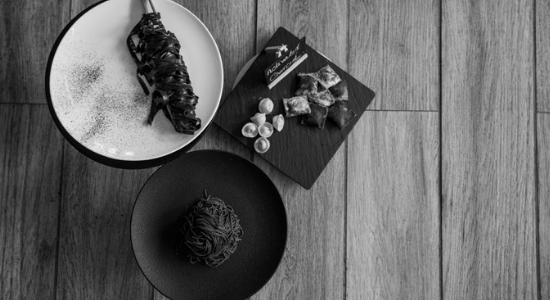
Photo Credits: Cicchetti, Gurugram
With the essence of a wine bar backed by excellent food and service at accessible prices, the excitement lies in the food at Cicchetti. It includes cheese boards, a delicious selection of small plates, soul-satisfying main courses as well as delicious desserts! Their signatures include Smoking Cheese Dome, Egg Plant Ravioli in Tomato Consommé, Poached Chicken Quenelles in Mustard Sabayon, Almond Crusted Fish, Lamb Shanks with Polenta, Potato Leek Soup, Chocolate Salami, and Vanilla Bean & Coconut Pannacotta with Fresh Raspberry Sorbet. Each dish in the menu is beautifully plated with a lot of attention to detailing with the use of authentic ingredients. The emphasis is on fresh, innovative and affordable offerings, in a cool and casual vibe and ambience.
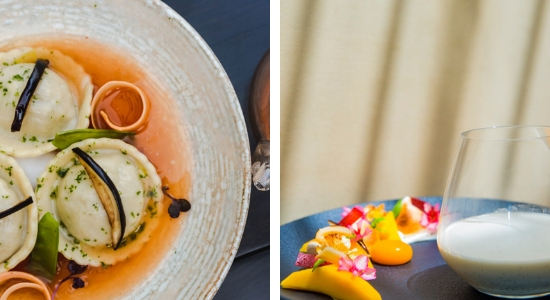
Photo Credits: Cicchetti, Gurugram
The multi-layered European menu has been curated by Chef Neha Singh, trained from Glion Hotel School, Switzerland. Her style is very interactive owing to authentic techniques, masterful styling and an array of cooking skills that are truly international. The dishes on the menu are handpicked while keeping the significance of fresh produce and locally sourced ingredients in mind.
Beverage Menu
The beverage menu is where you will find all the drama! Molecular gastronomy is used to create variations in textures, an element of surprise & drama for the guests. Molecular mixology brings science to the shaker to create new flavours, textures and enhancing the overall experience. The award-winning coffee menu includes a wide range of Signature Hot and Cold Coffees, other offerings for the teetotallers are Gourmet Tea like Café Frappe, Cafe Pasha, Cinnamon Macchiato and Jasmine Mandarin Tea.
The Ambience and Decor
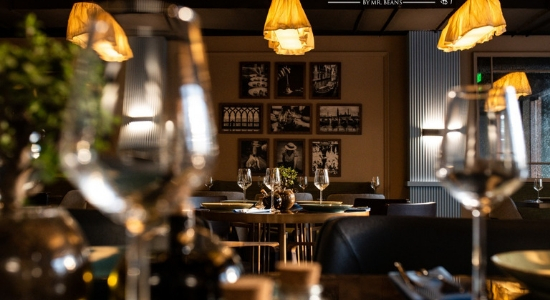
Photo Credits: Cicchetti, Gurugram
Situated in the bustling DLF Cyber Hub at Gurugram, Cicchetti by Mr Beans is an amalgamation of old world charm and modern contemporary finesse. A warm, informal space and a fresco setup (with 40 covers indoors and 30 covers outdoors) are adorned with worn down mirrors, creating mirages. The fabric lights, mud colour Italian stones used for flooring look chic and minimal transporting the patrons to the lanes of Venice. With worn down mirrors, each corner oozes a European simplicity. The restaurant is a fascinating mix of Venice bar culture and new-age techniques offering a menu which blends the Italian dishes and its culinary gastronomic goodness in complete harmony.

A first-of-its-kind in Singapore, Maziga Indian Bar & Grill follows the concept of a casual-style cafe and dining experience with a Modern Indian cuisine menu that brings old Indian favourites, but with a twist.
Created by Chef Javed Ahamad and team, the folks behind Singapore’s premier Indian restaurant Punjab Grill at Marina Bay Sands — Maziga has opened its outlet at Whitefield’s VR Bengaluru Mall. It is the first outpost in India. It promises to create an innovative Indian dining experience in a trendy and fun environment.
And what does “Maziga” mean exactly? The term refers to cooking in traditional earthen pots. Chef Javed Ahamad takes on traditional dishes such as kebabs created by the nawabs and turns them into a patty for his Kulha burgers — a signature menu. While the vibe of the restaurant is contemporary and new age, the menu is very Indian and rooted, but with a playful twist.
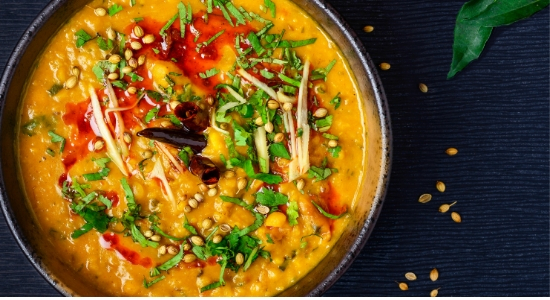
Dal Tadka served at Maziga
The seating at Maziga is comfortable and plush but not overdone because the focus here is on the food. The ceiling is perked up with giant crystal drops chandelier-style lighting.
Also Read: This Bengaluru Restaurant In India Is Doing The Nikkei Cuisine
The 15-Course Journey Through India
While the regular menu offers plenty of choices, the USP of Maziga is definitely their 15-course tasting menu, available for lunch and dinner. The tasting menu gives a whirlwind experience.
The meal starts with Chat Masala Yoghurt Spherification, Goat Brain Pav, Quinoa Upma Cod Fish Kaffir Lime Sauce. Move on to Chicken Liver Coconut, Banana Flower Dumpling, Edamame Beans and Green Peas Soup, Malwani Prawn Bharta, White Chocolate Bombs, Tandoori Smoked Duck, and Palak Gucchi Khichdi and more, ending with the 15th course, the three varieties of desserts.
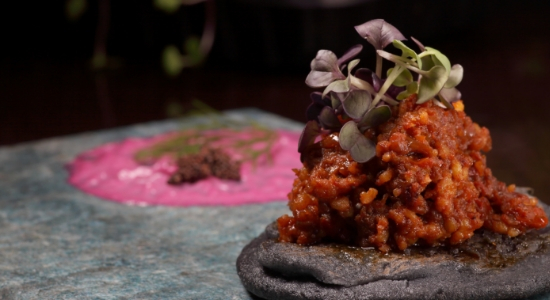
Charcoal Pancake with Malwani Prawns | Maziga
Every dish on the tasting menu is meticulously thought-out and re-interpreted to give diners a unique and alternative perspective to Indian cuisine.
À la carte menu
The À la carte menu includes a meal with good ‘ol Pind Wali Kesar Lassi, Shikanji, Matta or Jal Jeera. There’s also Blueberry or Avocado Lassi. The diners get a variety of choices in salads such as the Murgh Tikka Caesar Salad or soups such as Broccoli & Lentil Shorba. From the Chaat Bazaar section, one can pick Methi Papadi Chaat to Mumbai Beach Ragda Pattie, or the trendier Artichoke and Kale Chaat and Goat Cheese Samosa.

Seafood Pilaf (left) and Gilawat Kabab Kulcha (right) | Maziga
The pan-grilled kababs section includes choices like Tava Scallops, Daniwal Aloo Paneer Tikki with Raspberry & Amchur Chutney and Lamb Galouti Kebabs. And wait! There’s Chicken Tikka Popcorn with Truffle Mash, Maziga Naanlets and Maska Pao Bhaji Fondue too. The big, fat barbecue section offers vegetarian and non-vegetarian grills — all done in tandoor. Vegetarians can take their pick from Peshawari Bharwan Aloo, Dahi Wale Kebab or Mazika Chukunder Aur Quinoa Seekh Kebab. For non-vegetarians, there is Amritsari Crab Kaffir Lime Korma Sauce, Tandoori Lobster, Tandoori Duck and generous kabab and seafood platters.
The mains comprise curries with national representation — from Rajasthani Saunf Wale Aloo to Tandoori Gobi Mussalam and Jaipuri Bhindi Masala to Kashmiri Rogan Josh and Chettinad Duck Curry.
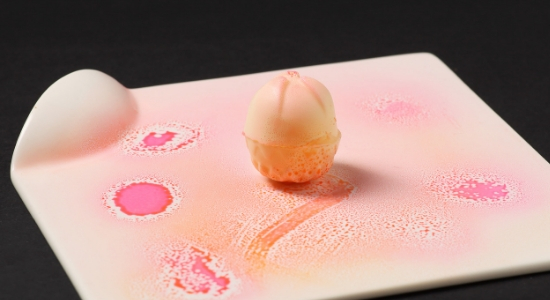
White chocolate Gol Gappa | Maziga
The desserts come with a few Bangalore twists such as the Malai Mawa & Gulkand Cheese Cake the Kurkuri Mysore Pak Halwa. But there’s also the quirky Bournvita Phirni and Masala Thandai Panna Cotta.
An Ode To Singapore
With a nod to its Singapore roots, Maziga offers the classic Singapore Sling with gin and cherry brandy. Classic like Negroni, Bloody Mary, Daiquiri, and Manhattan are also on the menu along with Martinis and Margaritas. There’s also a selection of international beers, aperitifs and shooters to pick from.

The restaurant menu is a wider concept. If I narrow it down and speak only of a Pan-Asian restaurant in India, you get so, so many options on the menu. I do not want my menu to be perceived as such. Today when you take a look at the menu of a Pan-Asian restaurant in India, you end up realising that it is essentially a Chinese restaurant with few dishes here and there. If you take up a Chinese restaurant they serve “Chinjabi and Sino-Ludhianvi” food. If a restaurant decides, ‘yes, we want to move towards serving the Pan-Asian’ as it’s the flavour of the month or it is something in demand, it should include Indonesian and Thai, too; it should maintain the authentic flavours. I don’t serve more Chinese or Japanese cuisines. In fact, I want to be less Chinese and more other cuisines. That is my vision for Wok Tok at The Grand, Delhi. You’ll see Japanese and Chinese being served less, and other cuisines more. In the orchestra, those other instruments - Indonesian, Burmese, Thai, Malay play a bit louder; Chinese and Japanese are in much more precise form. That is my vision.
Must Read: Menu Hacks For Your Online Food Delivery Business In Mumbai
You should always keep a track of these three elements while designing or re-designing your restaurant's menu.
Defining the Concept of the Restaurant
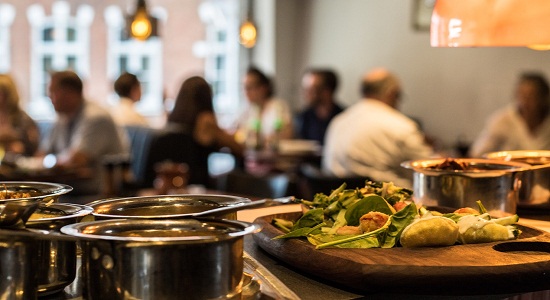
The concept may already exist. You might just want to change the menu but still, you need to readjust. The times might have changed or the restaurant has become old now. You need to focus on one question – “What is going to be the concept of the restaurant?”And then the rest - what space you want to hit the market, where do you stand and what you are. More importantly, you need to know what you are not. What your restaurant is not. Know if there are any boundaries - huge or tight, within which you’ll operate. Those boundaries have to be very well defined.
Respecting the Geography
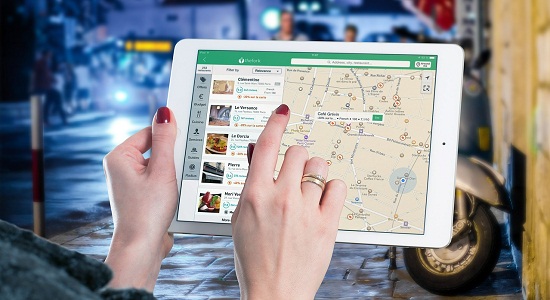
In terms of the area or the geography you are in, you have to respect those sensibilities. If there are more vegetarians, your menu has to be designed accordingly. Geography doesn’t mean just the location; it’s the times, space and the place you live in. You see much more examples of lactose or gluten intolerance than you would see 10 years back. So you have to have those options on your menu. If there are more vegetarians, you want to have those kinds of cuisines. The next menu I’m doing for the Cascades, my all-day dining restaurant, 40-45 % of the menu is vegetarian. So, you have to respect the geography and what the market demands.
Click To Read: Points To Consider While Designing Menu For Restaurant
Maintaining the Balance, Flavours
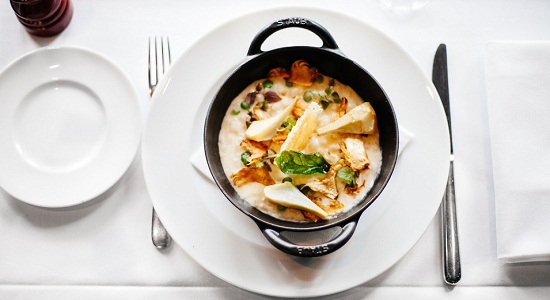
And then you have to look at the balance of rich vs light food. I always wanted to have my food very flavourful. Whether it’s an Indian, European or a Japanese restaurant, I don’t like bland food. When I say bland food, I don’t want you to mistake it for the spicy cuisines we are served in India. It’s the flavours that matter. The flavours have to be robust - that is my thing. I have visited a lot of restaurants and had insipid food that really didn’t speak to me. I love vibrant flavours. That’s a personal and individual thing to me. And then I prefer to balance across from rich to light, from flavourful to delicate, from spicy to non-spicy, from veg to non-veg; you have to balance all these aspects, based on the geography, and the kind.
As told to Sara Khan, Feature Editor, Restaurant India

As your brand is all about having a great dining experience. What are the elements that you bring in to give customers’ an everlasting experience?
A meal at A Reverie is comforting and yet gastronomically challenging, the food is simultaneously artisanal and technical, with references to both traditional and avant-garde. We don’t want to be a restaurant that does anything as prosaic as merely feeding people. Instead; we attempt to conjure the history, landscape and soul of culinary evolution from around the globe in a series of thoughtful, attractive plates of food.
For a restaurant to be good; so many pieces have to come together and our restaurant is a three dimensional, fully sensual, repeat artistic performance every day.
You have hosted likes of Vijay Mallya, Hrithik Rohan, Celebrity Chef Raymond Blanc, Yuvraj Singh and Farah Ali, Sussanne Khan, Sushmita Sen, Pooja Bedi, amongst many others. How difficult/easy was it for you to host or accommodate them? Tell us about your experiences?
For us, all our diners are VIP and there is no special status given to celebrities (except for often, they have a retinue of their security team). Most of these celebrities over the years have become extremely dear friends and regular patrons. Serving them is in fact far easier, and not because they have higher spending power, but because they truly understand the creative aspects of our culinary philosophy and are less fussy; leaving it to us to serve them whatever we please. Experience of serving them has been an absolute pleasure and effortless to be honest.
What are the design elements that make ‘A Reverie’ different from other restaurants?
A Reverie has an air of contemporary tropical chic. Behind the intriguing facade, a warm yet professional welcome awaits you. The recent re-design & renovation, this November has only enhanced that further. At first glance, A Reverie is theatrical; deliberately intended to root diners in “a reverie”
The dining area of the restaurant provides a cohesion that few places can emulate. It is a universe of emotional connections, enriched with the feedback of proximity.
Tell us about your journey in the world of food?
My husband and I were professionally trained in the hospitality business and worked at the finest luxury hotels in the country; had garnered a compelling individual reputation in their respective fields. Since its inception A Reverie instantly became an institution to reckon with; the standards have remained stratospheric and therein began one of the most intriguing stories in modern Goa gastronomy.
What are the challenges that you face in running a high end restaurant in Goa?
At the onset; we do not consider ourselves high end, though it has been a general perception. It’s just that we are different from quite a few sea side casual eateries with no negative inclination towards them. Entrepreneurship in this country, not just Goa does come with a fair share of challenges. One is perennially on a fire fighting mode, which can get rather overwhelming at times. We have had a rather crazy tryst with such challenges.
The key challenges specific to Goa, which we reckon other restaurateurs too suffer seasonal variables, ever changing markets, ingredient availability, torrential rains that cause enormous damage to property, equipment, resulting an issues of maintenance. It’s like opening a new restaurant every year with stupendous costs of pre-opening, especially for open air or partially open air restaurants like ours.
Quality manpower and retaining a consistent loyal team in a state where a huge segment has a traditional sailor temperament of wanting to work aboard is a huge challenge. And lastly, there is a small segment of audience who fail to appreciate our pricing and compare to some other eateries obsession and fail to understand our obsession with supremely high quality ethically sourced ingredients which come at a price. And that being a licensed legitimate business operation, we are obliged to charge VAT.
Are there any plans to take the business to other parts of the country? Absolutely in form of pop up formats or perhaps even permanent ventures. We look forward towards showcasing the essence of Goa to other parts.
How did you design your menu? Tell us something about that?
Over the years, travelling and exploring have given me a way to explore new things. Dishes are re-visited, re-interpreted and re –invented. It is an endless continuous pursuit of learning, nourishing one’s love of food & its improvisation whilst maintaining a youthful enthusiasm, energy & dynamism.
We have seen many new restaurants opening in Goa during the last one year and the new one is that of Sarah Todd. Do you look at her as a potential competitor?
Firstly, in the business of restaurateuring; perhaps unlike many other businesses good competition is the greatest thing. No one has a meal at the same restaurant every day, especially whilst on a holiday experience. Multiple good restaurants help build a gourmet destination and collectively help all restaurants & a holiday destination. Travellers in today’s day and age actually plan holidays around meal experiences. We would want nothing more than to have many more great dining establishments open in Goa.

Falafal is the freshest concept in the restaurant business today. Beginning as a very small outlet, the group has expanded its services to IIM-Ahmedabad, seeking a great response and invite from the institute. And, with a target to achieve over 50 stores in 3 years, the juice brand is betting big on the highly ripe food business market.
Share your entrepreneurial journey and what led to the birth of your brand?
It was a thought that struck my mind in the office where I used to work before starting my own venture. Then I shared this thought with my parents who used to live in Mumbai at that time. So, then I started working on the strategy part and other things which eventually led to the birth of FALAFAL.
How many stores are there within your brand today and what is the average store size?
As of now we have 2 stores under the brand name of falafal. The average store size is of 700 sq. ft.
What are the challenges with growing your (franchise) business-i.e. maintaining standard, brand integrity, customer experience etc. and how have you addressed these challenges?
Yes, there are a lot of challenges when you are expanding, but I have strong and experienced team of people who work hard round the clock to maintain standard, customer satisfaction and all. Above all, we also have very strong IT support, that minimizes our problems and help in maintaining the standards.
As you are serving the freshest concept, how is the response so far?
So far we have got an overwhelming response. Within six month from the date of starting Falafal we got an offer for IIM Ahmedabad to open up an outlet at their campus. And now also from a small shop of 250 sq. ft. we have almost 1500 sq. ft. of space for the cafe at Drive in (our mother outlet).
What are the extended menu other than juice and shake?
Apart from juice & milk shake we have fast serving items like sandwich and wraps. We also have antipasti pizza, pastas and dessert as well.
What is the average duration a customer spends at you cafe and the average price break up?
More than 50% of business works on take always. But apart from that, a dine-in customer spends around 45-60 min at the cafe. The average ticket size is Rs. 200-250/-.
Do you have growth targets for next few years and any strategy for how you intend to achieve this?
Yes, of course. We are now looking to come up with 50 stores in 3 years across the western region via franchising.
How are you building on quality at a time when your model is based not on food but time?
It starts from the procurement itself. We buy the best brands and best quality fruits available and we have dedicated vendor for that. So, it helps us in maintaining the quality.
Where would you like to see your Brand in the next 5 years?
In next 5-7 years our target is to cover up major cities of India and is expecting around 200 stores in next 7 years. I see FALAFAL in the top brand of the nation.

Based at Dehradun, Cafe Marigold is run by three friends- Alka Kukreti, Amita Bahuguna and Kumud Taimni, wives of merchant navy officers who are mostly sailing for at least six months in a year. It’s only when their children went off to other cities for college education, they suddenly felt the need to do something to fill that big vacuum. Thus the idea of running a cafe was born as food was one common passion among them.
The cafe was started on a shoe string budget as they were all homemakers who turned into entrepreneurs. The business was launched more on an experimental basis with no specific business plan. “We just followed our heart and turned our passion for good food and cooking into our profession. All our travelling experience and running a household helped us set up the cafe. We learnt the job only by hit and trial method,” shared Kukreti.
What is the USP of your restaurant?
The USP of our cafe is simple, fresh, home style food which is cooked under our strict supervision and served at very pocket friendly rates ranging between Rs 50 to Rs 350 at the maximum. Our menu changes every day and this idea of a varied variety of dishes served on different day’s appeals to people. The location of the cafe is also a big factor as it is nestled on top of a hill far away from the hustle and bustle of the city. The music which we play at the cafe is also very much loved by our guests. So, personally supervising the functioning of the cafe and interacting with the guests, is the biggest USP of Cafe Marigold.
What new product range you are offering for your customers?
Our Menu changes almost every day. On special days we just offer a discount on certain food items served.
Which is the most popular dish among all? What is the revenue generated from the same?
Most of our dishes are popular. But our guests love the pastas and Dimsums which are very much in demand. We also do a saucy version of the Dimsums, available at our cafe only; guests are also very fond of various Mutton and Chicken curries that we serve on our special menu. The Chicken Steak has many takers and so does the Grilled Fish Platter. Besides this various kind of Sandwiches, Burgers and Cheesy Garlic Toasts are available at the cafe everyday and are very popular among the younger guests. The Pancakes and eggless chocolate cake served with ice cream are very popular too. So, in all I can say that most of our dishes are popular.
How do you maintain the authenticity of the food?
For us the freshness of every dish we prepare matters the most. Nothing is pre-cooked; everything that we have on the menu is cooked fresh when we get an order for that particular dish. That is why I can say with conviction that the authenticity of our food is maintained for our daily menu.. In fact we personally supervise the purchase of the fresh produce, breads and meats etc required for consumption at the cafe every day.
What is your marketing strategy?
Our marketing strategy is simple. We, at Cafe Marigold believe in selling pocket friendly simple delights to our guests in the form of fresh delicious home style recipes that we prepare at the cafe every day. There is never a compromise on quality. We believe in quality than quantity. Smile of satisfaction that we see on the faces of our guests before they walk out of the cafe keeps us going.
What is your average footfall?
The average footfall at the cafe differs from day to day. Generally on weekends numbers of people who visit the cafe are double of those who visit on weekdays. On weekends we mostly get big groups and families whereas weekdays it’s more of young professionals and students. On an average at least 30 to 40 people visit the cafe every day.
What is your expansion plan?
For now we are content with what we have. Making money was never the purpose of our life. Doing something constructive to keep ourselves positively occupied was what we were out to do. For now the challenge is to continue running the business on our own terms without any compromise in the low pricing and the high quality of food that we offer at Cafe Marigold.

Thakur Bhuvan Singh completed Bsc (Hons) in Hotel & Restaurant Management from Oxford Brooks University, UK and worked at Radisson, New Delhi as a trainee. On completion he joined his father’s restaurant business under the brand DeeZ Biryani | Kebab | Curry. He worked with his father towards the expansion of the brand from a Single Restaurant to six restaurants at present. Here are the excerpts from the interview.
What made you enter into food business?
My interest in the F&B industry led me to create something more diverse in terms of both food and service and hence I decided to launch a Multi Cuisine Cafe and Bar under the brand Filmy Cafe & Bar by DeeZ.
How many stores are there within your brand today and what is the average store size?
This is the first store and it’s in 2000Sq.ft.
What’s so filmy about your new restaurant?
The theme, the interiors, the experience the music and everything else is Filmy! We have different walls showcasing different film trivia like Famous dialogues, major blockbusters from 50’s to 2010’s, a James Bond corner etc. the props are also very filmy like the PK radio of Amir Khan, film clapper from Universal studios, Helmet from 300 etc.
What are the initial challenges and how have you met these challenges?
The initial expansion (two more restaurants) will be done as company owned restaurants and not franchised restaurants. During this period we will develop our expertise in replicating the successful model that we have. We have already started working of creating Standard Operating Procedures and Manual which will help our future restaurant management teams to maintain the same standards of food, quality, service and customer experience.
Can you tell us more about your Business operations from the standpoint of Loyalty Program, technology (Hardware & software), raw material sourcing and talent recruitment & training?
Being a Unit of DeeZ, a lot these things have been a part of our operations from day one. We have complete recipe management solution borrowed from the central kitchens of DeeZ and we also have CRM systems which maintain a database of customer details as well as previous orders and likes/dislikes (if any). The material sourcing is done at DeeZ Central kItchen thereby enabling us to get great price and quality through our suppliers who have been working with us for many years.
What is the average duration spent by the customers’ at you cafe and the average price break up?
We have two categories of Customers who visit us. The first being the cinema goers, who usually visit us before the movie show or during intervals, these customers have little time and usually order for quick snacks and shots. They typically spend anywhere between 15-30 minutes and we ensure that the service they receive is very quick with average price cost of Rs 400-500. The other are the regular diners who take out time and enjoy our food, beverages, shesha and music. They typically spend 2-3 hours with around Rs 800-1000 total spend.
Do you have a growth targets for the next few years and can you reveal any strategy for how you intend to achieve this?
We are looking at expanding both DeeZ and Filmy Cafe & Bar brands across Delhi NCR. The targets are 5 DeeZ and 2 Filmy Cafe and bar before December 2016. All these will be company owned outlets. We will be franchising both the brands outside Delhi NCR.
How are you building on quality at a time when restaurants are much more focusing on the concept and theme?
We believe that our restaurants should please each of the five senses but taste should be the foremost. DeeZ has been famous for its taste and quality of its food products and we have enjoyed this reputation for almost three decades. We wish to attain the same status for Filmy as well. We have strict quality control measures as we believe that repeat clientele will always endorse you if you have good taste and quality of food products. We are selling food as the primary product the concept and theme are an additional secondary support.
Where would you like to see your Brand in the next 5 years?
We would like to take things one step at a time and hence we only make projections and targets for the next year which I have already shared with you.

What all things come along in designing your restaurant menu?
There are three important factors that are taken care of when designing a menu; The guest profile mix, as understanding this is most important as we are catering to business travellers who are always in a rush. Keeping this in mind food offering should be supplementing and revitalizing. The menu mix should also support his business needs while the guest is entertaining others, The Rend, customers today are amongst frequent travellers and well aware of the trends. They are also looking for simplicity yet innovative platter which always surprises them so missing that in menu is certainly reflect on the footfalls of the restaurant and The usage mix: The menu shouldn't burden the operation, it should rather compliment. Increase in usage of similar ingredients directly multiplies the profitability.
What menu tweaks are you planning to introduce to stand out from the crowd?
We consider all the three factors mentioned above. I am looking forward to bring in more authenticity and also innovative styling. This will further help position our restaurants as trendsetters.
Tell us something about the supply chain management in your hotel. Who are the suppliers? Can you please name some?
The supply chain for all Delhi hotels is almost similar. We are associated with the big vendors who are common in hotel supplies. The simple fact is that, these vendors are aware of hotels requirements and they are dedicated towards supporting the hotel.
Comment something on the involvement of senses in the restaurant?
Senses to me are most vital. Especially, in case of restaurants, we use all our senses while dining. The eye appeal is something that will mesmerize the customers even before they have entered the place. The rich aroma of the Food & ambience will keep them enticed. The ambiance and music also plays an important role. It should be soothing and entertaining. Once all these four senses are taken care of, the taste will create the master stroke for everything.
What are the different types of cuisines served at your restaurant?
Level 2, a 24 hour multi cuisine restaurant offers several options both through buffet and A-La-Carte. It also promises a sumptuous dining experience and offers fresh, flavourful world cuisine with a trendy, live kitchen.
Indyaki, an authentic Indian speciality restaurant cooks meals to perfection in an extraordinary culinary theatre which feeds the senses and entertains the appetite. Its major attraction lies with its Teppanyaki grills which serves food in the similar style. The best sellers here are Indyaki tawa macchi, chicken apricot kebab, subz kaju ki seekh, nalli ki nihari and dal Indyaki.
What is the contribution of good menu in restaurant business? How are new techniques in food helping the restaurant grow?
A balanced menu mix and standardized offerings will always multiply the footfalls which are directly proportionate to the revenue. There are many e-channels to grow the restaurant business but by far customer’s personal experience is the best way of marketing with least or no investment. The guest is the brand ambassador. I always strive to see the WOW expression from my guest and rest assured business is taken care of.
How familiar are you with the legalities involved in opening a restaurant? Are you planning to open up your own restaurant?
I am quite familiar with the legalities but I am not focusing on my own enterprise at the moment. My prime focus is performing the best in my job at Radisson Blu Hotel New Delhi Paschim Vihar and would love to make F&B the most talked about thing. I also look forward to place this hotel in top league through hospitality recognition and awards.
What according to you are the top trends that will drive the industry in 2016?
Authenticity without tampering the basic recipes ably paired with innovations will be the mantra. Great chefs are always rooted to basics and that’s why they are successful.

Chef Ranveer Brar is today one of the top celebrated chef in India. From working as a judge for MasterChef season IV to taking his dancing skills on television, the young chef has become the favourite choice of every modern food place in India. And, recently when MTV has launched its cafe in association with Delhi based Fun Bars Hospitality; Brar was roped in as the corporate chef of the group crafting the most inspirational food from around the globe.
What made you join hand with MTV as a brand?
I think MTV as brand perfectly fits into my kind of food. Today, food places around philosophy are turning a stint. We have played around certain recipes like biryani iron chini, gulab jamun cheese cake, Japanese miso tikka etc. which are a new inspiration in food. But what should be kept in mind that the food should not become a mockery while playing around flavours. So, we have tried to keep the respect, yet FLYP the food around.
What is the most important aspect that you look into while crafting the menu?
Respect is what I always keep in mind while designing the menu. The respect for flavours has to be intact, serious and food should always be inspirational not the fusion.
How much is your involvement in this menu?
Everything in the menu is thought for and curated by me. It took us almost four months to create the concept and finally bring the menu.
How localised is the sourcing?
Unfortunately when we are trying to use international food, we have incorporated western ingredients and global imports and rest everything is locally sourced.
How difficult it was curating the menu for MTV keeping in mind the kind of customers’ it targets?
Every time you curate a menu it is difficult because you want to know who’s going to eat those foods. For me the biggest challenge was the urban youth of Delhi who would visit the restaurant, their choice, likes and preferences.
Are you going to create menu for all MTV outlets depending on the city and region?
We have very different palates, perception and taste. And the menu is not going to be copied in any part of India. The FLYPing part is consistent everywhere in food and drinks.

What all things come along in designing your restaurant menu?
While designing a restaurant menu, culture, taste of people and availability of ingredients play a vital role. Any good menu should be able to deliver something exciting yet authentic meal experience to guests.
What menu tweaks are you planning to introduce to stand out from the crowd?
This is the only hotel in Thimphu with a Pan Asian restaurant.With our carefully curated and authentic Pan Asian flavours and savoury South East Asian cuisines to tempt the palate, SeseShamu presents an inspirational dining experience. Bhutan being a country which attracts lot of Asian tourists, we are planning to introduce a Bento box style lunch menu.
How is the food palate different in Bhutan as compared to India?
Bhutanese food has a very distinct flavor and most dishes tend to incorporate cheese and chili. This is the only country in the world where chili is not used as a seasoning but a vegetable. Some of the favourites include soups and stews of meat, lentils, dried vegetables, spiced with chili peppers and cheese. The cuisine in India differs from region to region. There are a lot of religious and cultural influences in the Indian Cuisine. It also varies seasonally, depending on which fruits and vegetables are available. It is very diverse- Southern spices and ways of cooking is very different from North or East. India is a real pot pourri of flavours, yet each region stands out as unique.
Tell us something about the supply chain management in your hotel. Who are the suppliers? Can you name some?
Bhutan being a landlocked kingdom,it is still developing its supplier and vendor management. For our hotel we do buy vegetables and fruits from the local vegetable market to support local vendor. We also buy our imported and Asian ingredients imported by local importers. To name few “My Mart” and “Eight Eleven” are the biggest importers we are currently dealing with. For our imported meats and sea food we rely on our vendors in Singapore or Thailand.
Comment something on the involvement of senses in the restaurant?
An exceptional and satisfying dining experience is also a sensory experience. Today there are restaurants which are moving forward and breaking traditional norms, whereby they are experimenting with food and using senses to give a wow effect to guests. Use of molecular gastronomy is one such example. What you see on your plate, what you can smell and what you can taste are all important aspects of good dining. The textures, presentation and food design are also key elements.
What are the different types of cuisines served at your restaurant?
We satisfy every craving with the global flavours and artful presentation of our two fine restaurants and Lounge bar. Our signature all day dining restaurant, Latest Recipe has a mix of local and international cuisine, including the signature Le Meridien breakfast. Our stylish speciality restaurant, SeseShamu serves authentic flavours from across South East Asia.
Latitude 27 complements the creative atmosphere of the Le Meridien Hub by drawing guests in with the sights, sounds, and smells of a coffee bar by day and a cocktail bar at night, showcasing our brand’s sparkling program.
What is the contribution of good menu in restaurant business? How are new techniques in food helping the restaurant grow?
A good food menu plays an integral part in a success of any restaurant. Technically without a good menu and tasty food no restaurant can survive. Innovative food offerings, attractive description of your dishes that also generate curiosity while at the same time whet your appetite, are all qualities of a good menu.
Menus should be easy to read and understand. It should have the right amount of information, yet encourage some ‘conversation’ points with the servers or even amongst the guests ordering. All this, it is found, sets the tone for a good dining experience. It really starts with your menu.
An ideal menu should always have ‘chefs specials’ or the restaurant’s signature dishes mentioned. A menu should also keep changing even if some ‘favourites’ are kept the same.
What inspired you to become a chef? Tell something about your journey in the world of food.
I belong to the family of chefs and so you can say it’s in my DNA. I started my career with Taj hotels as management trainee under Taj’s veteran chef Arvind Saraswat. I have been and trained in Traditional European, European fusion and Lebanese cuisine. I have worked or trained in very exclusive and respected restaurants like Orient Express, Patio, Macchan, Chambers, Trattoria and Mynt.
In my 13 years culinary journey I have worked with Taj hotels, Millennium Hotels, Ista Hotels, Hyatt Hotels before joining Starwood Hotels and Resorts. I can proudly say that I have learnt from the best in the field.
How familiar are you with the legalities involved in opening a restaurant? Are you planning to open up your own restaurant?
We all have to know the regulations and licences needed for restaurants as we are in a very professional industry and an international hotel chain. Licences range from food safety licences to pollution, health and fire safety licences. At present I enjoy being part of Le Meridien. Cuisine is one of the signature elements of the brand and that gives me a lot of opportunities to innovate and try out new things. I feel i am still learning and am enjoying the process. Who knows, later on in life I might start something of my own. Right now I am happy to hone my skill and just make good food for people seeking unique dining experiences.

Being an IIT alumni, what made you to come up with the idea of online food ordering store? How do you consider this business?
The business got started by me and my partner. We were always interested in doing something of our own which was not just interesting, but also socially relevant, so we found food as an area with most impact as well as it is most relevant for us. And hence, decided to go with this business.
What was the initial investment and how did it happen?
The initial investment was around 70 lakh. It was all from our end only with the help of our family, friends and promoters.
You have around 400 options in menu. How do you maintain the consistency and authenticity of each of the item served?
We have very high quality chefs in our team who have a long- term experience with Oberoi’s, Intercontinental etc. They are only responsible for maintaining consistency and authenticity of all the foods served.
You serve around seven different cuisines. Do you have specialised chefs for each cuisine. How difficult it is for you to manage them under one umbrella?
It is not at all difficult for us as all our operations are driven by the needs and likes of the customers. Today, every person has his own particular likes in terms of cuisines, so we don’t want a group of people ordering food with us to stick only on one single cuisine or food. Moreover, the experience of our chefs and the time and management helps us to do these things together with ease.
Can you tell us the elements you kept in mind while designing the kitchen to meet both these requirements?
There are two main points which we keep in mind while designing the kitchen, one is proper space and options to keep the food ingredients fresh and safe and another is to make sure that the food should be prepared in the minimum possible time without affecting the product quality and all this is done by our chefs with the help of some professionals.
What are the products that you use in your kitchen?
There are more than a thousand products which we use in our kitchen. We possibly use the best quality ingredients and equipments; also, we have a lot of international products we get supplied from the importers directly. We get most of our products from NCR only, but we are also directly linked with some importers who help us in getting the products from outside India.
Is there any special type of packing you use to maintain the freshness of the food product till it reaches the customer? From where do you get these packing materials?
We don’t use any special kind of packaging as we supply it within 15 minutes once it gets prepared. Within 15-30 minutes, it reaches the customer where the customer has to consume it within one to one-and-a-half hour so it does not require any special kind of packaging. For packaging, we keep in mind the basic things that it should be hygienic, of best possible quality and food grade.
What has remained your most successful marketing strategy? Currently, what strategy you are following?
We try to provide quality and toothsome food to the customer so that he/she should come again and again, apart from that we use promotional offers from time to time. Our most successful promotional offer was food at one rupee which we did for two days. Sometimes we tie up with different brands and names also to promote our name and products.
How many food orders you get daily? What is the annual turnover?
We do around 350-400 orders daily and the annual turnover is around 1-1.5 crore.
Are you looking to enter into the franchisee model of the business?
Yes, we will surely go for it as we want to maintain hundred percent quality of our product, but right now we are not working upon this, but we will definitely do this later.
In which other cities will we see Bueno Foods serving in the next 2-3 years?
In next three years we will be in the top ten cities which will include NCR, Mumbai, Bengaluru, Hyderabad, Chennai, Chandigarh, Calcutta and Pune.

In a candid chat with Franchise India, Chef Preetam talks about the evolution of Indian food connoisseurs, next big trend in the restaurant industry and his duty as a head chef at the restaurant.
Please tell us something about evolution of Indian food connoisseurs?
The Indian cuisine is almost as diverse as the entire European cuisine, because of the four different main regional styles: the North Indian cuisine (the regions Benaras, Kashmir, Mughlai, Punjab and Rajasthan), the South Indian cuisine (regions Andhra, Kannada, Kerala and Tamil), East Indian cuisine (regions Assamese and Bengali) and Western Indian cuisine (regions Gujarat, Maharashtrian and Malwani). The northern part of India is mostly rural, although it contains large cities such as Delhi and Calcutta, thus its cuisine is more agricultural than anything, wheat being a primary constituent of this region’s dishes. Southern regions however trend to be more exotic, spicier in their dishes and rice is a constant ingredient in their food. To give the taste of their main dishes, North Indians use onions and coriander whilst southerners use a more exotic coconut base for their dishes.
What according to you is the next big trend in the restaurant industry?
Next big trend in the restaurant industry could be the food court where people can get the all the cuisines easily under a single roof.
Your expertise includes Italian, Kababs and Mexican cuisines. Which among these is most preferred by the customers and which one is your favourite?
Most people prefer Italian food in comparison of kababs and Mexican cuisines; even I am also very fond of Italian cuisine.
What made you choose a career in hospitality industry? Who was your inspiration?
Cooking was my hobby when I was in school; I used to watch the show of Chef Rakesh Sethi and Chef Sanjeev Kapoor to know something new and creative from them. These two celebrities were my inspiration.
We see lots of foreign food chains coming to India. What is the reason?
Yes, a lot of foreign food chains are coming to Indian market to develop their business and to get the idea of Indian restaurant industry and to know more about Indian cuisine so that they can also easily prepare Indian food and keep the Indian dishes in the menu accordingly.
How challenging is your role as the head chef at the restaurant?
Being the head chef at the Lounge, I have to maintain the quality of food and the standard, correct portion size to be delivered to the guest, so that we can make the guest happy and satisfied, as you know “one satisfied customer brings you hundred more”.
What offers is your restaurant planning on Diwali?
We are not offering anything on diwali but we are celebrating “cheesy chicken & beer festival” which will start from 16th October to 2nd November. We are doing beer competition from 21st October to 24th October which would be a fun for beers lover, we are making gift hampers for diwali special offers and discount. We keep on trying the new things as the industry needs.
Tell us something about menu designing in a restaurant? What are you doing at your restaurant to go delicious by design?
We keep “special of the day” everyday in the menu, so that guests get to know what special we are offering apart from the ‘a la carte menu’, and to design the menu we always keep the nutritious and healthy food in the chart and of course it should be according to the need of the restaurant.
How to maintain value and position within the market place?
To maintain the value and position within the market you have to maintain good standard, you should not compromise with your quality, should keep the things right and according to the needs and demand of the guest. If you follow these, you will automatically start rising and people will also appreciate you.
How has been the journey working as a kitchen trainee with TAJ President, Mumbai till now?
I started my carrier as a kitchen trainee with Taj President, Mumbai. I must say it was not a cake walk. I remember I used to work 20 hours a day. But then I realise if you are working to learn something then you have to be strong enough, I worked for Karma Restaurant in Mumbai, Olive Bar and Kitchen Delhi, Hotel Diplomat, Manree and Zest managed by DLF in a different position. I am fully satisfied with my carrier till now.

In a candid chat with Franchise India, Chef Sandeep Pande talks about the current F&B trend, menu designing and also about his role at the hotel.
What is the current food and beverages trend in the industry?
The current food and beverages trends include using local ingredients, adopting simple presentations and offering small plates.
How does restaurant communicate their use of ingredients to guests?
We communicate use of ingredients to guests by way of mentions on the menu.
Your expertise includes multiple cuisines like Mediterranean, Indian, Thai and British. Which of these is your favourite and which is the most preferred by customers?
My preferred cuisine is Mediterranean and the bold flavours of Garlic, Olives, and a lot of seafood is very much preferred by the guests.
What all things come along in designing a restaurant menu?
While designing a menu, we keep in mind our guests’ preferences, weak areas of existing menus, current trends, availability of ingredients, seasonal tastes etc. Menu tweaks include live counters, smaller tasting portions, seasonal, local and guest driven tastes.
We see lots of foreign restaurants coming to India. What is the reason?
Reasons to attribute to this current trend are like- increasing number of people willing to experiment and eat out; increased per capita income and a stable population coupled with increased exposure and travel are the main reasons encouraging foreign chains to debut in India.
What are you doing at your restaurant to go delicious by design- creating a lifestyle relevance right from store design to food layout?
I am doing two important works- live counters and involving guests at every stage of menu.
What is your role as Executive Chef at Renaissance Mumbai Convention Centre Hotel?
I lead a well-chosen team to deliver excellent guest experience by way of providing a ‘wow’ dining experience to them.
What are the different types of cuisines served at your restaurant? Which one is most preferred?
Indian, Western, Chinese, Italian are the different types of cuisine served at our restaurant. We keep on doing various food festivals as well to attract customers. The most popular cuisine is Indian.
What do you do to ensure the quality of food going out to the customer?
To ensure quality of food which is going to be served to the customers, I always ensure there is right receiving, we have a well trained team and consistency in preparation.
Tell us something about your journey at Oberoi Hotel to a senior member of the UAE Culinary Guild and a member of the National Registry of Food Safety Professionals, USA?
The journey has been very rewarding. During my journey, have worked with some big names and cooked for even bigger names.

In a candid chat with Franchise India, Chef Soumya Goswami talks about his stint at the Oberoi kitchen, his responsibilities and his take on gourmet dining.
I look after the Oberoi group’s New Delhi kitchen as well as 25 other properties. One should have the passion to do all activities. What I do on a daily basis is interact with chefs, look at menus, go to upcoming restaurants or existing restaurants to do upgrades.
On pitching in innovation
Most importantly to be ahead of the market, innovation is the key to our survival and without innovation restaurants die a natural death. A restaurant’s shelf life is about 2 years and people get bored very fast. To drive innovation, I bring in discipline within my chef team wherein one has to research two new dishes every week.
All our hotels do promotions – produce-based and region-based chef-centric promotions every quarter. This drives innovation again. We have to constantly tickle the customer senses to draw them back into the restaurant again. Today customers are not just happy with normal meal but expect something of a little surprise, a little more indulgence.
On the gastronomy in hotel and fine dining restaurant
Gourmet dining is on the rise. Standalone restaurants have jumped at the concept and they are giving hotel restaurants a run for their money. Earlier the hotels had great talent in terms of chefs but we lose them to standalone restaurants now. There’s a lot more money involved with standalone restaurant because people understand food more.
Gourmet dining starts definitely with good produce and good ingredients. If you have high quality ingredients only then can you transform them into high quality food. Second is the ambience because you cannot expect gourmet dining kind of atmosphere at a very basic minimalistic restaurant. You need gimmickry in terms of ambience to give a luxury feel to the restaurant which I think is more of the standalone restaurants are doing better and better every day. There are some great interior designers specifically meant to do interiors of restaurants. And certainly what is most important is having a good talented chef at the helm – one who chooses his team well, keeps them motivated so that there is consistency. A good talent pool is what is needed to execute a good fine dining restaurant.
On competition
Oberoi group and its competitors strive very hard on innovations. Every hotel chain opens a new themed restaurant every 2 years. Earlier it used to take a decade or 5-6 years; now with the hotel boom coming up whoever has the money wants to build a nice hotel.

In an exclusive interview with Franchise India, Manuu Mansheet talks about the design, the art aspect before starting a new project.
I did my schooling from Modern School (Barakhamba Road) and then completed my graduation from Sri Venkateswara College (South Campus). I also did an MBA from Fore School of Management (Delhi).
It was art that attracted me towards itself. From the very childhood I was very artistically inclined and always yearned for a creative and unique career and destiny played the right role. I started designing, styling, and decorating at a very young age. I am a self taught person & got an opportunity to go abroad (Netherlands) and get trained at an IKEA pilot store, and subsequently work at 2 stores of IKEA in UAE.
When starting a new project I hear my inner voice, is it a project that I like or love to do once I am clear about that I act myself busy and geography, location, style, budget are the factors that I consider.
There have been many milestones and many interesting projects where I learnt a lot, added a lot and created a large body of very satisfying and commercial work like Tatas,Godrej, Bharti Walmart, Alsorg etc. But my first commercial design project was displaying art for an exhibition at Taj Palace hotel. This was also my stepping stone to future.
My day could take me to site visits, meetings, shopping for props/accessories etc. Mondays are generally reserved for teaching. Evenings go for art openings, theatre, etc. My mother is a major influence in my life. I have learnt a lot by just watching her in my growing up years.
When we are talking of creating an experience or environment for a service, a store and a restaurant, it has to appeal to our 5 senses. It is the senses which experience the food, the ambience, the design, the art and many more things at a place or in a restaurant.
It’s just a gift- to be able to visualise a solution or idea and then be able to think out of the box and do things. For a new graduate I would say think out of the box, break some rules and take risks, rewards will follow you.
In my opinion a restaurant goes through a lot more usage/wear and tear than a normal household/office, etc. hence good quality material and finishes stand a longer lasting chance.
I am in the process of doing up some heritage buildings, restoration work excites me and I am also doing some projects for the Govt. I renovated an old cafeteria once and it was a bit challenging to change the user’s mindsets and satisfy the staff. Nobody was keen to change old methods but ultimately it became one of the most buzzing lucrative businesses.
It always works to be practical and functional. The design should be stylish but not OTT (over the top).I hate vulgar money display and gaudy tastes. Being careful and sensible with budgets is very welcome but being stingy and cheap.
The biggest decision is on Look. Most clients are very reluctant to experiment. A promoter may sometimes want to compromise and pack more number of patrons where as I; a designer may want space for easier movement or features/props etc.
A restaurant should focus on five things, art, linen, flowers, candle and a wow menu card. A restaurant should always select a designer on his past experience, projects done and the passion for the art and design. I design restaurants according to the experience and what do particular restaurants want for his customers to feel, what is the type of cuisine to be served, who will be the target audience the restaurant is targeting.

In a candid chat with Franchise India, Chef Gautam Chaudhary, Executive Chef, Pink Poppadom, Hyatt, Bangalaore, tells us why his restaurant stands out among other brands in serving the evolved Indian food.
Journey of becoming a Chef
I wanted to be an engineer but couldn’t get through. I was selected in many of the institutes; IIT was my dream. I thought to try for it next year but to save time; I joined Hotel Management as a career option. When I joined this industry, I loved the industry, the concept and the idea of experimenting various innovative stuffs that I ended up being a chef. My journey so far has really been marvellous – from Radisson Blu to travelling to US and finally returning to India.
Concept that went behind Pink Poppadom
Indian restaurants across the country are not doing very well. The fine-dining restaurants are generally dinner only; they are not open for lunch. People go for Chinese, Oriental, Multi-cuisine so the footfall in Fine dines Indian restaurant keeps falling. So the concept was to create more awareness among diners and of lightening the cuisine as people want tasty food without too much fat.
Bangalore has a very Cosmopolitan crowd and it is very upmarket place. It’s very easy to market a concept like this where people are well travelled and they are aware what is happening around the world. So, it was much easier for us to market, inform the guests and inform the clients.
We have three restaurants in total – one of them is the Pink Poppadom which serves progressive Indian food. The second is Lido which is an all-day dining serving European, Indian and oriental. The third is basically a bar and a lounge. The concept of Bar and Lounge is Singapore style food say small bite foods. I think, presently in India, only five restaurants, including Pink Poppadom is serving this food. We use high quality ingredients and since it is Hyatt we do not compromise on quality.
Involvement of senses at Pink Poppadom
Food is an art and to praise any art you need to have your five senses open – starting from the skin (to touch and feel) to eyes (see how food is presented) to tongue (taste) and finally to the nose (for relishing the delicious smell coming from the food). Today people eat food with a spoon, a knife and fork, but the truth is that one should feel the food.
Importance of a good menu
Menu is very important for a restaurant. It’s very important to have a menu that connects with your guest and such a menu is based on the market segmentation that you have done. Menu is also based on the clientele that you are getting or expecting at your restaurant. So, I think menu is a very important aspect because it drives your revenue.
For designing a menu for your restaurant, you need to understand the concept very well, i.e. the knowledge of the concept, the market segmentation (i.e. understand what the market wants), find out whether your plan is the requirement of market, analyse the competition (what your competitors are doing), unearth the information on which all restaurants are running this concept, how are they doing and their pitfalls, etc.
Pink Poppadom takes Indian food to the next level. This restaurant serves very progressive food in a very elite manner. In this restaurant we are trying to lower the calorie making it healthier because Indian food is considered to be very heavy. It has higher amounts of fat, cream, butter and cashew nuts which have been used traditionally in Indian food. So, we are trying to deviate by taking the cuisine to the next level.
Experience at Tanzore restaurant, Beverly Hills, USA
It has very different working culture. In India, manpower is very economical. So we utilise manpower to the best. While in European countries manpower is very expensive so most of the things we get is accessed from the market which comes to the hotel and restaurants in pre-processed format.
The best thing which I like about foreign countries is that the sales are very much incentivised. You have certain amount of salaries but the incentives generated from the revenue come along to you. See if you sell something for 1000 rupees you will get a certain percentage as incentive for the revenue you have generated for the restaurant. It’s a really good thing. That way each and every member is highly motivated. Even in the back kitchen, where one does not generate revenue, a certain amount of incentives are given for maintaining product quality for the restaurant.
Awards and Accolades
There are a number of awards bagged by Pink Poppadom. The best one came from BBC Good Food, which awarded us the best Indian cuisine restaurant in the country. There are number of awards that we got from media publications named Food Lovers in Bangalore. So, in terms of award and accolades, we have huge recognition.
Reason for low sales in Indian restaurants
The reason for low sales is that the Indian food is still not developed. If you talk about various other cuisines – French, Italian, Mexican, Oriental – they have evolved themselves, but Indian cuisine has not evolved itself. Indian cuisine needs to go under reformation and be presented like any other cuisine; they need to be a little lighter. India cuisine is still traditional with lots of oil and heavy gravy including nuts and pista korma, kaju-korma. The Awadhi-Korma also tends to be very heavy. People in older days used to easily digest that food because they tend to do lots of labour intensive work but today the situation has changed. So, I think there is a need for reformation in Indian foods to make it lighter.
Advice corner
One should know the basic concept behind opening a restaurant, understand what is on the offer and what other people are doing.

Valentine week is again around the corner and what’s better to set the mood than gobbling amazing food. Usually, people arrange romantic dinner, candles, wine, dresses and many other such things for their love ones. Restaurateurs decorate tables with flowers and lightening the candles to make customers feel warm and a musical atmosphere in the background.
“We are expecting a good number of people considering the fact that we are celebrating in upcoming Palate Mini. In this, couples can rejoice special bond of love in a romantic European style with an interesting and romantic European theme, decor and set up. Also, they can relish the best store for them by our talented chefs of La Vie”, commented Anirudh Gupta, Owner of La Vie.
Designing Special Menu
In all these romantic settings, what about the food? Many restaurants have created special menus for those looking to share this particular day with someone special. Food for Valentine’s Day must look swanky, behold, a feast of gastronomic fares to tickle non-desi and desi taste buds, according to Junglee Billee restaurant.
“Our expert chefs have prepared a special food and beverage keeping the occasion in mind. All three chefs belonging to different kitchens (Indian, Chinese and Continental) will be presenting their specialties to diners for this occasion. Apart from that, we will be offering complimentary drinks to ladies”, shared Sameer Bhalla, Owner of Bellagio, Ashok Vihar.
Similarly, Raji Sandhar, Owner, En– The Japanese Restaurant states, “We are offering a special five course menu for couples. The menu is designed by Chef Muramatsu, who will certainly leave the couples asking for more. One can also savour Chef’s Valentine Special Japanese Brown Tea in dessert to conclude dining experience on a sweet note”.
Promotional Activities
Restaurants are promoting Valentine’s Day with new and interesting offers to attract guests. Everyone is aggressively promoting on digital and social media like Facebook, Twitter and Instagram; so that the target audiences are covered. . Lanterns Kitchen & Bar, which is an Irish concept pub and restaurant serves Indian, Oriental, Mexican, European and fusion food to guests. But, the place is known for music lovers owing to live performances given by well-known artists. Therefore, this Valentine, “We are planning to celebrate this occasion with a Pre Valentine Bash. The Delhi-based pop, electro and pop-rock band Panic will be performing here at Lanterns Kitchen & Bar on 13th February. A special EDM and romantic acoustic set by them will surely set the mood of all the couples for Valentine’s Day”, pointed Jasneet Sahni, Owner of Lanterns Kitchen & Bar.
Even though, this Valentine is on Sunday many restaurants trying to handle things efficiently. It is like a challenge for owners and staff to work under such situations. “We have made special preparations for night considering the fact that Valentine is on Sunday”, added Bhalla.
Valentine‘s Day is the perfect chance for people to prove their love. And, restaurants and food are now making it easier.

A well designed menu is said to be a good marketing tool for restaurants. Menu design gives representation and creates an impression of brand in the mind of customers. Earlier, altering the menu on a daily basis was a challenge, but gradually with planning and availability of resources, it became easy and possible. It is convenient and affordable for the customers and the diners get a chance to treat their taste buds with various food options.
Menu is the first thing that customers ask for when visiting a restaurant or any eatery. These days, we see expanded menu to please the customers. Chefs try to create new innovative meals adding various seasonings to it. It is similar to catering for new food experiences through different product lines.
“Change of menu is a strategic decision for Innerchef. We do not make short term tactical and gimmicky decisions before preparing any item on our menu. Each item on our menu goes through lot of deliberation, consumer testing and release plan”, shared Rajesh Sawhney, Co- Founder at InnerChef & Founder of GSF Accelerator.
Benefits
From the time food tech start-ups caught eyeballs, competition level has also increased. As a result, changing menu is one of the factors, which can make a difference. Start-ups mainly include home chefs as they are specialized in doing multi tasking, like preparing recipes which are unheard off or not tried.
On the same note, Neha Puri- Founder, Cyberchef, says, “Because of this change in menu, many people inquire about the daily addition to the menu. Actually the number of eyeballs visiting website everyday is converted into sales”.
Boast Sales
Menu changing helps to boast sales, but it is the attractive, healthy and organic food items that mainly focus of this generation. Like, menu should include gluten-free, vegan and vegetarian in it. Therefore, chefs and restaurant owners experiment and add different flavours or ingredients to make menu interesting.
Food tech start-ups generate revenues from their apps. Apps can detect location automatically and then people select their preferred meal from the menu. In addition, it takes few seconds to place an order and within no time, the meal is delivered at the designated address.
Rescheduling of menu is also significant, since it maintains a needed change and tries to cater for quality products. Currently, start-ups ensure hygienic, spices, quality of oil and other basic things required in menu. And also, creating new menu does not cost much to restaurateurs.
Consequently, as Sawhney states, “Every item in our menu is a star; we nurture each item not only as a standalone product, but also a key input into our product portfolio”. But consumer will always want variation, no matter how tasty and healthy food chefs prepare.

Today, eating at a fine dine restaurant is emerging with food taking a new height in the market for all food lovers. As food industry is expanding, number of fine dine restaurants have also witnessed a growth.
On the same note, Apurva Salarpuria, Executive Director, Salarpuria Group and Owner of Studio shares, “’Casual’ fine dining is what the world is moving towards. Increasingly fine dine restaurants are not only improving the quotient of food, but are also working on creating a casual ambience for patrons to enjoy”.
Characteristics
These are next generation restaurants with uniqueness is the ambience and special service, which is thoroughly enjoyed by the customers. Many restaurateurs are now opening theme based fine dine restaurant to attract more people.
Restaurant owners have certain blue print in mind while designing the restaurant so that they create a different experience for customers. They use elements like warm, earthy and subtle colours as a theme.
“Everything in the industry is changing at such a brisk pace. But, use of technology and non traditional ways of marketing are the biggest changes that are having significant impact.” ” shared Sanchit Aneja's, Owner of IKKA.
Now days, entrepreneurs are not afraid to try something new to attract customers’ attention as changes are appreciated by people. Earlier, it was restaurants but currently it is more of fine-dine restaurants that are doing the trick. The basic difference between them is that prices are on the higher side, food perceived to be of excellent quality with use of organic food can be served. These restaurants also serve alcohol also served for guests.
Even though, many online food start-ups have recently risen in the metros, fine dine restaurants has not got affected by it. People will always be keen to try new cuisines, especially at restaurants. There was a time, when fine dine restaurants were not popular enough, but it has eventually regained its position. It has happened because dinning out has become a fashion and people want quick food because of busy lifestyle. This is one of the key reasons for this trend to flourish.
People usually visit restaurants during occasions such as anniversaries, engagements, birthdays, meeting & conferences etc. It is a sense of adventurism with new innovative ideas. In menu, mostly everything is the same but, few items for instance seafood is not served everywhere, it is only present at particular restaurants only.
Therefore, along with serving good food, maintaining an excellent ambience also adds value to a restaurant.

London Cafe, as the name suggest is quite subtle yet classy restaurant to spend good times with colleagues and friends. The concept of the restaurant is seven star lounges. The cafe has given more of lounge concept with sofas and low rise tables for its guests to relax and rejuvenate.
Environ of the cafe has continental touch. The interiors are more of European and Turkish style, having beautiful chandeliers and centre pieces. It has been inspired from the artistic nature of London and blue art Panarsh of English culture.
There are ornate pillars at the bottom of the stairs leading to the cafe, which resembles the pillars out of a temple from down south. The stairs have a bohemian vibe that surely adds glitters to the overall surrounding.
The atmosphere is very smoothing and guests can enjoy foot tapping music as they slip into light mood conversations with their friends.
London Cafe offers international flavours with fresh local ingredients. Continental and European cuisines are the main theme food of their restaurant. They added few cuisines like Lebanese, English, Italian and hint of Indian also. Vegetable delight wrap, Alla Verdura Pizza, Greek frappe and cappuccino are some of the items people love to have.
London Cafe mainly targets working professionals among others as its customers.
Afternoon timings are 1:00 pm – 4:00 pm and 8:00pm - 10.30pm.
On New Year, the cafe launched new menu with lots of new options mainly in continental food. As a further explanation, it is planning a bar by April-2016.
So next time you plan to let your hair down, do visit London Cafe to enjoy a perfect blend of food and music.

Nothing can be more befitting than Da Vinci’s for Mumbai’s newest Bar All Day- Yellow, in the hustling-bustling area at Khar, Mumbai.
Why Yellow, you ask? Celebrated Restaurateurs Timmy Narang and Nicky Bedi, M.D, Yellow Tree Hospitality reason it out saying “our day starts with yellow and ends with yellow, hence bar-all-day”.
“Sunrise has shades of yellow and so do sunsets" add the duo, which opened their doors on 18 Dec 2015.
Yellow- Bar All Day isn’t one of those experimental concept bars but your everyday home-style cooking brought to you in their freshest form with organically sourced and specially handpicked ingredients, by renowned International Chef, Davide Cananzi.
Spread across 5000 sq.ft space that boasts chic urban indoor bar and dining complimented by an al-fresco experience reminiscent of summers celebrated in Italy. The restaurant offers exquisite spirits and a brilliant selection of global wines to magically enhance the food.
Yellow doesn’t thrive to be different, which makes it different altogether. The cuisine is dominated by European and Mediterranean influences presented in a way most authentic and simple. The breakfast bar brings you eggs cooked as per preference and served in a cast-iron pan. A variety of waffles and pancakes -- the ideal way to kick-start a day.
The salad bar ranges from Moroccan cous-cous salad to a light sea-food salad made with organic, handpicked rocket. Mains include handmade lasagna, ravioli and tortellini along with a selection of grilled meats for the fit aspirants. The smoked salmon and caper risotto is proof to authentic home-style piquant European cooking.
For red meat lovers the Crackling pork belly with green apple sauce is a delight, “sumptuous, flavourful and highly recommended” adds Chef Cananzi.
All 'white meat' depends on the fresh-catch-of-the-day with a wide selection of sea-food also with forced insistence from Mr.Bedi and Mr.Narang.Customized pizzas, although not available on the menu are part of the daily specials.
Desserts make up an integral part of European cuisine and chef Cananzi being an Italian by birth emphasized on the ‘Davide signature Tiramisu’ being his signature while all desserts are specially prepared butter-free.
The team at Yellow Bar All Day is well-read and immensely experienced, each having spent over a decade in the hospitality industry.Narang the conceptualizer in particular has entrusted in Bedi's vision to create magic , the magic required in mundane living. All of them having a common goal in mind of delivering a memorable and fulfilling time reminding one of ‘yesteryear simplicities’.

With global advent to India, dining out scene in the country has changed vigorously by not only experimenting with the food but adding a bigger theme to the restaurant. And, as youth is the major crowd pullers today, pubs, bars and nightlife are the new trend in the industry. They are the main target group as they visit regularly to these places in large numbers. It has shown a remarkable growth rate in India especially in the metro cities- Delhi, Mumbai and Bengaluru, Pune. A closer look to top places in five Indian cities.
The Vault Cafe
One of the best pubs in Connaught Place, Delhi; the ambience and setting are very British Colonial, giving a Royal Vibe. It has the quirky elements in terms of F&B preparation and presentation. The interiors have been specially crafted in a particular style incorporating old heritage clocks and treasure boxes The USP of Vault lies in its name, there are separate Vault chambers constructed for a private and royal experience. It consists of five different Vaults, which can accommodate 8-22 people as the number of covers and is ideal for small gathering or private parties. This place is known for food and music.
Waters – Pub & Grill
It is situated in south Mumbai into the central suburbs; reflects the spirit of progressive suburbs. The defining character of the place is that it places a lot of emphasis on being chilled out. This seemingly simple idea encompassed a lot of social norms which need to be appreciated if one has to understand what constitutes chill behaviour. Waters Pub and Grill is a place for more than great food.
Toit Brewpub
This is a brew pub in Bangalore, brewing culture that promises some bodacious brews, fabulous foods and a supreme brew-pub experience. Toit is the place to tantalize your taste buds as well as to chill out the quality time with friends and family. It has spectacular views from the rooftop as you indulge in mouth watering snacks, sumptuous cuisines and exotic spirits.
The 1st Brewhouse
The 1st Brewhouse serves five styles of revitalizing flavours as soon you walk in, you will be taken by the aroma of freshly brewed fine quality Beer. It serves the customers with special beer freshly brewed and handcrafted under personal supervision of a German brew master. It has a range of more than 2000 varieties such as Ales and Lagers in the draught format, served in a relaxed ambience, to the tunes of lounge music. It also has wonderful atmospheric wooden interiors.

By Invite: DK Soni, Co Founder, Foodport
A question that all of us in the restaurant business often ask ourselves is – what’s the recipe of success?
Many obvious answers come to mind – good food, fast service, pleasant ambience, cordial staff, and variety. But are these enough to achieve and maintain success? No, there’s something else, which is more critical than all of these aspects and is essential to the success of a restaurant.
That’s consistency. Consistency in all aspects of the business – especially in taste and in quality– leads to success. This consistency can only be achieved through ‘standardization’. It helps deliver on customer expectations– if the first impression was good, and if not, then correct the shortcoming. Standardization helps build a loyal customer base.
It becomes even more critical when the restaurant has many branches spread across cities or countries. If not for standardization, the ‘goodwill’ or ‘brand equity’ earned at one branch can be easily lost at another.
Although, the benefits of standardization are many, these are critical reasons that I’ve shared with our young team at Foodport to encourage them to set a clear procedure – a standard for each and every activity that they do. And, since defining standards seems to have become a standard at Foodport, I am sure it will encourage you too.
Brand image – It takes years to build a good brand image, which can be destroyed in a matter of minutes. A good brand image requires consistent quality output. This can only be achieved through a tried and tested standard procedure.
Consistency of product–This is the backbone of ‘brand image’ and includes all aspects of the restaurant business – taste, quality, presentation, ambiance, and service. If one fails to deliver even on one of the aspects, the brand image is damaged. To create a positive brand image one needs to deliver a quality product consistently and at all times and at all places.
A case in point is McDonald’s – a great mix of standardization and local adaption. The procedures and practices are global standards. The food is adapted to suit local tastes and then standardized. E.g. A McAlooTikki Burger will taste the same whether you order it in Delhi or in Mumbai.
Cost effective – Standardization helps pre-plan and forecast requirements. When we know beforehand what we will require and its quantity, we can benefit from economies of scale, esp. for non-perishables. On the other hand, a set standard procedure can help restaurant owners experiment with the concept of ‘Just in Time’ delivery for the supplies of perishable goods. A successful ‘Just in Time’ supply chain can help save on costs incurred on storage and preservation of raw material – esp. for perishables.
Saves time – A standard process helps complete regular tasks with ease, leaving no room for ambiguity and errors. The time saved can be utilized to try out new things and innovate. A set and written standard procedure helps cut down on the time put in to preparation for a dish as the "mise-en-place" is set and everyone is aware of it. It also helps avoid chaos, which is a recipe for disaster for any restaurant kitchen.
Makes training new staff easy – Standard procedures make it easy to train new staff and delegate tasks to junior staff without the need of constant supervision. Although standards or set procedures are needed in all departments of a restaurant, it is of special importance in the kitchen. One cannot afford to experiment with signature dishes that the restaurant is known for. Neither can one expect a newly appointed chef to prepare the dish the way the senior chefs do it. But, if there are written instructions then both delegation and training become easier. It also helps in keeping the ‘show running’ in case of huge staff turnover or absenteeism.
Uniform pricing – Again, when there are set standards for everything – where to source, how to make and how much to make, it becomes easier to manage costs and pricing of products across locations. If any, the difference will only arise due to a tax structure. A uniform price across different outlets of the same restaurant chain is also a part of a positive brand image.
Given the creative nature of the industry, standardization at an industry level for certain things may be difficult to achieve, as- recipe, cooking styles, serving practices, etc., all vary from restaurant to restaurant. But, this should not deter you from setting one for your own restaurant – experiment – find out what works, create a procedure for it and follow it to. Remember, Food when prepared and served in the right way is not only nourishment for the body, but also for the soul.

Connaught place is flourishing with new Restaurants & Café’s, and adding more energy to CP's energetic life, Delhi saw the launch of Filmy Café & Bar by DEEZ on Wednesday night, 9th December in the heart of city Connaught Place.
The theme is so very filmy that it’s something every movie buff Indian will relate to and feel to be here.
Filmy Café & Bar is a fresh venture by Thakur Bhuvan Singh from the esteemed & pioneered DeeZ Biryani | Kebab | Curry.
Situated in the heart of Delhi, Connaught Place, just next to PVR Plaza Cinema, it surely catches the eye balls of the masses.
“Filmy Café & Bar is a place for all those who enjoy simpler elements of Life- Good Food and Great Music and believes in Be Filmy! Eat Filmy,” Says Thakur Bhuvan Singh, co-owner Filmy Café & Bar.
Spread over 1500 sq. ft, Filmy Café & Bar is surely the eye candy bar & cafe in Delhi. Filmy, Quirky, Lively, Innovative & Foodies Paradise are just the few words to describe its ambience.
“Since cooking is my passion and after helping my dad in Deez, I wanted to open something funky for all the Delhites. And what best other than opening a Bollywood & Hollywood themed café & bar in one of the oldest building in CP and next to massive cinema hall” added Singh.
Walls embedded with famous Bollywood & Hollywood movie posters with quirky dialogues and props like Amir Khans’s PK radio, war helmet from 300 etc. will surely catch your attention immediately. With simple seating arrangement, having cushions printed with bolly-holly movies scenes matches with the essence of the place.
“When it comes to Food, Delhi wants to have it best. Our place is A Bollywood - Hollywood Cuisine Cafe & Cocktail Bar where you can enjoy Delicious food along with mouth-watering mocktalis& Cocktails. The menu includes a diverse range from Pizzas to Burgers, Biryanis to chilli chicken and more so there is something for each palette”, said Daleep Singh, co-owner, Filmy Café & Bar.
Filmy Café & Bar is suitable for all age groups and people who are crazy about some filmy gupshup. It is a warm, cozy, comfortable café & lounge style restaurant where each meal is a treasured time to relax and share a bounty of wonderful food with family and friends. Every time you dine with them, you can relax & chitchat for hours.

As the biggest and brightest festival is fast approaching, gifting and fun is one of the top priorities on everybody’s mind. Diwali is one such festival which is celebrated with a huge passion and enthusiasm in India. But, gone are those days when it was said that Diwali is a festival of lights and crackers. Today, people love to enjoy festival by dining out with friends and family.
And, to colour the city in the festive nood, Restaurants in the city are all geared up to celebrate the festivity of lights, all designed in new attire to attract the customers’ with their best and lucrative offers. Many restaurants have added new variety of sweets like Beetroot Halwa on Saffron Toast, Khubani Ka Meetha, Anjeer Barfi, Banana Roast, Beetroot Halwa, Low fat Kalakand etc.
Restaurants showering great deals
Move over the boring mithai and dry fruit boxes and make your gifting innovative and memorable with customized Diwali hampers as Courtyard by Marriott, Gurgaon has come up with a delightful variety of three beautiful hampers and a customized Indian sweet box created by the hotel at INR 5500+ taxes, INR 3000+ taxes & INR 1500+ taxes, offer an exclusive selection of goodies and liquor from J.W. Black Label Whisky, Red House wine & sparkling waters to homemade diwali cookies & chocolates, prunes, marshmallows, cheese crackers & pasta.
All three hampers contain a pretty handmade diya to mark the occasion of Deepavali. The Indian sweet box priced at INR 750+ taxes can be customized as per the guest’s preference with an eclectic assortment of mouth-watering Indian sweets all made in-house using traditional recipes and organic ingredients.
“We have launched all new Progressive Indian Menu at Café Terminus 1. The interesting thing about the menu is the Indian essence presented the fusion way. The menu incorporates dishes like of various tastes from the “Tava Machhi marinated with South Indian coastal spices” to “Indian Railway cutlets”, the “Banjara Maas with Whole wheat Roti”, “Chicken Tikka Masala with Steamed rice”, “Chicken Tawa Masala”, “Stir fry Thai Chilly chicken”, the scrumptious “Apricot Ginger Crumble” and “Sambuca Flambe Gulab Jamun” to create a wholesome experience for the food connoisseurs of the city”, shared Vikrant Batra, Owner, Cafe Terminus1.
Cornitos, a Mexican snacks also offers gift packs containing nacho crisps with chunky salsa, cashews, almonds and coated green peas in this festive season. The Fusion Gift Pack contains nacho crisps with chunky salsa combinations, priced at Rs 370. Cashew and Almond Combo contains king-sized cashew and California almonds, priced Rs 600 and Coated Green Peas Gift Combo which has nutritional value.
While known for serving the finest beers in the city, The Beer Cafe has also gone colourful with the festive air blowing in the city. “To enhance the festivities at The Beer Cafe we have introduced a special Paan flavoured chocolate that we would give away to all the guests who come in to our outlets in Delhi NCR. We recently launched an all day dinner at Mumbai Airport's Terminal 2”. In terms of the decor, we already have a generous dose of colours that are perfect for this season and impart warmth to the ambience. For us the idea is more as a token of appreciation for our guests than revenue generation" pointed Priya Vasudeva, GM & Marketing, The Beer Cafe.
And the deal goes online too
Naturally Yours, India’s online organic brand has brought for its customers’ Diwali Super 15 per cent sale on 4, 5, 6 November on the entire gift product. The price range is from Rs 360-2400. Even the online food ordering portals like Justeat.in brings super value Diwali offers in meals and special dishes from there partner restaurants in Bangalore, Mumbai and Delhi. Likewise, Foodpanda is giving 50 per cent off on selected restaurants in online food order and 30 per cent off online paid orders.
"We are a search engine for everyone who is looking to go out for a good dining out experience and which is not just restricted to the festive season only. However, to add to that, we do have some fantastic offerings for our users at some of the top restaurants of the country. And, It’s not just Diwali, but the festive mood in itself, prompts people to dineout more," shared Vivek Kapoor, Co-Founder, Dineout.
Hence, gorge on some refreshing treats at your nearest restaurant or book your table with the best deals coming online on this special occasion as lots of restaurants have introduced new menus or has come up with some innovative dishes with some exciting offers for all the food lovers.

Only months after Delhi witnessed the launch of the illustrious food festival at the Jawaharlal Nehru Stadium, with a footfall of around 1 Lakh food enthusiasts, 70 participating restaurants, an enormous line up of chefs and lots of other entertaining factors, The Grub Fest is back with yet another edition to please the palates of thousands across the capital.
The second edition will take place from 23rd to 25th October at a new and significant spot, right at the border of Delhi and Gurgaon - the Ambience Lawns.
The Grub Fest is the brainchild of young entrepreneurs - Aman Kumar, Arjun Jain, Chaitanya Mathur and Mani Singh Cheema. Earlier in April, The Grub Fest showcased the very best of India's food flavours and Delhiites got the opportunity to savour a variety of cuisines including Lebanese, Chinese, North Indian, Italian, Mughlai, Mexican, Coastal, Sushi, amongst others. Exhibitors included renowned names like Royal China, Fio, Townhall, Smokeys, Zizo, À Ta Maison & PCO, Khan Chacha, Punjab Grill, Zambar, Holy Smoke and many more, most of which are already on board for the upcoming edition.
Adding to that, new names like B Bar, Social, Indigo, Indigo Deli, Backyard, Urban Pind, Zerzura, Room Service, amongst others, are also excited to be a part of this foodie paradise. Apart from more food, music and entertainment,they are introducing some remarkable new concepts that will be a first in the country.
There will also be integrating the business fraternity of the F&B industry, whilst giving an opportunity to small businesses, start ups, blogs and tech savvy entrepreneurs in the food space to showcase their products. The festival will be travelling to Pune, Bengaluru, Mumbai and Chandigarh, and even internationally to Dubai and London.
The Highlights of Grub 2.0 Grub Explore - The Grub Team is bringing to you authentic chefs, cuisines & mother elements from different parts of our diverse & culturally rich country, like Bengal, Kerala, Nagaland, Kashmir, Goa and more.
Entertainment - Performing Artists to include an expansive list of acoustic, rock, indie, comedy and electronic music. Few artists that they are in talks with include, Parikrama, Astitva, Nikhil Chinapa, Hari & Sukhmani, Vir Das's Comedy Rock Band - Alien Chutney, and a surprise big headliner for the event. Final artist list to be announced closer to the event
A Celebrity Chef from India to host a Pop Up restaurant Cafe Epicuria is popping up at The Grub Fest, bringing along the renowned brands under its roof
Grub Mile - A courtyard curated by House of Sunrydge to include brands like Indigo, Indigo Deli, Qla & many more.
The Surprise Element, Grub Storey's - The first of its kind in India, a multi storied, travelling restaurant at a food festival. More details will be announced closer to event.
Early Bird Tickets - to go live 1 month before the event at Ambience Malls, Gurgaon & Vasant Kunj. The event has also introduced a special ticket for families, and express entries.

By now technology has touched every aspect of our lives, with the coming out of mobile devices on the table, online reservations, social media and new payment methods; technology has infiltrated the food and restaurant industry like never before. These advances have made an impact everywhere, but one of the places we’re seeing more and more technology is in the food and restaurant industry.
Evolution in the process
The rapid evolution of software in the past decade has seen many tech innovations when it comes to dining out. Mobile technology is revolutionizing the way diners interact with restaurants. Although new apps are increasing, accelerating and reforming the dining experience, the ubiquity of smartphones can eclipse some of the very reasons we eat out.
“Technology is like “Duck’s Effect”. If you see a Duck in a pond, duck will look beautiful, calm. But inside she is paddling away like crazy to stay there. We have 19 technology partners and still going on. Technology is disruption, but it helps us to expand in many ways,” shares Rahul Singh, Founder& CEO, The Beer Café.
With the mobile technology you can search endless options, cross-referenced every which way. On the weekend evening, a typical fine-dining establishment might expect 25 percent or more of their reserved customers. But the online reservation services has more than 28,000 member restaurants and seats more than 12 million diners a month, sends hand-slapping emails to no-shows and deactivates users after four personal fouls in a year.
The digital tablets at tables allow one to order food and drinks without so much as consulting the waiter. The time saving technology is being adopted primarily by both casual and chain restaurants, where diners seldom need servers to expound on the laminated menu.
Moreover replacing menus, tablets have the potential to help hosts deal with incoming customers who may have reservations. This can be accomplished through connecting the restaurant’s website to some form of online reservation system using a service like apps or a website and then simply using the tablet as a means of checking out who is scheduled when.
Currently, pick a restaurant, make a booking, order or pay your bill is not a problem. For ex: restaurant reservation platforms, like Dineout can offer more nuanced guidance for the discerning diner. These apps help you in booking the restaurants of your choice avoiding the long queues at the restaurant. " The most important thing in today’s time is to keep the customer happy and loyal and the solution is the technology integration to create the ecosystem enable to go beyond,” says Vivek Kapoor, Co-Founder, Dineout.
Another app, Happy hour apps like DrinkOwl (free, iOS and Android) and Happy Hour Finder (free, iOS and Android) can steer you to the most happening bars and most alluring drink specials around the country.
Adding to the same line, Sharad Sachdeva, Chief Executive Officer, Lite Bite Food, Pvt Ltd points, “As technology plays an important role after certain point of time you cannot imagine your growth on manual system so definitely technology is required. So, we adopted the system and also implemented it”.
Technology is only getting better day by day. It allows customers to find restaurants, rate them, and decide where they want to spend their hard-earned money when they go out to eat. It also allows restaurant owners to be more efficient and effective in the areas they feel can be streamlined by hardware and software.

Eatlo, the Bengaluru based lunch delivery app recently raised second round of funding from Zishann Hayath of Powai Lake Ventures, Abhishek Goyal of Tracxn Labs amongst others.
Founded in December 2014, the food-tech app is looking to invest the raised funds in technology and scaling its presence and operations across Bengaluru.
“We aim to place food on your table by just a click. The way we work is very simple and efficient; we handpicked food from various chefs and dispatch it from various centers. All the customer has to do is choose the location, place an order in two clicks and enjoy great food in just 20 minutes,” said Sai Priya, Co-Founder, Eatlo.
Founded by two people who are true foodies and wanted to bring technology and food together to revolutionise the way we order food, Eatlo has an extensive menu which changes daily.
“Although, we’ve tied up with professional chefs, each dish is pre-sampled and sampled again on the day of it being served. We take taste, health and hygiene seriously and each dish is served only after it meets our quality standards,” shared Rahul Harkisanka, Co-Founder, Eatlo.
The company is also planning to strengthen its presence by building it team to 100 which is presently about 100, spreading across Bengaluru by increasing its fulfilment centres which today delivers food across seven locations in the city with 10 fulfillment centers, getting over 1000 orders a day.
“We are also looking to raise $7-$8 million in Series A funding and are in talks with venture capitalists for the same,” added Harkisanka.

With life going faster and busier we often don’t get time to show our feelings and love to our family and friends. Often we forget some of the most important dates and events related to them but this time one will probably repent if they forget this father’s day as there are plenty of attractive and mouth watering offers by some big restaurant and hotels which one can’t resist.
A Father is a Friend, hero, Pillar, Playmate and Role model & Fathers’ Day is more than remembering all that he has done for you, and it is also about creating new memories. On this auspicious occasion of father’s day make your father feels loved by taking them to a place where plenty of offers are waiting to make your day the way you want. The restaurants and hotels like, Zamozza, MoMo Café, 7 Degrees Brauhaus and Golden Dragon or Encounters at Taj Krishna have modified their services and offerings to give you an all amazing experience.
The exciting deals The World Kitchen & Bar ZAMOZZA is offering 25 per cent discount on all prior reservations and adding to make this day more special with full day live music to make the ambience more lovely and celebrating.
While MoMo Cafe at Courtyard by Marriott, Gurgaon will have a live pasta counter in the supervision of the Chef wherein the father-son duo will get a chance to make the pasta. The duo can also refresh themselves with summery mock tails at the bar which will then be served to the family.
The 7 Degrees Brauhaus is offering fabulous father’s day Brunch with lavish 5 star buffets and live JAZZ Music by BENNY & The Jazz Collective at Rs 1499 for unlimited food and beverages. The lavish buffet spread will include soups, salads, appetizers, Deserts, main course along with live counters including Indian, German and Continental delicacies with fresh German Brews & white spirit cocktails. There will also be a special gift for all the fathers.
With an effort to put a smile on his father’s face and create a cherished memory forever for him the Golden Dragon and Encounters at Taj Krishna are offering specially crafted lavish Brunch at both of these restaurants, along with a rare photo opportunity alongside a Harley Davidson Fatboy. At Encounters the cost will be Rs 1550 plus taxes per person and at Golden Dragon it will be Rs 3000 plus taxes per person.
Meanwhile, Mad Over Donuts, the Singaporean donut chain is also offering a Pre-ordered box of Donuts with a personalized message just for Dad. The Box of Happiness comes with 24 square donuts filled with delicious dark chocolate ganache and dipped in white chocolate.
Customers can create their own unique message up to 18 characters that will beautifully grace these donuts. Write I LOVE YOU DAD or YOU’RE THE BEST or THANK YOU DAD & much more to convey your appreciation towards Dad.
Thus, we can see that this Father’s day there is lot more offers to be given to your dad taking him to an unforgettable food walk.

India being rich in culture and festivals has given restaurants a reason to celebrate each and every occasion. With festivals like Baisakhi and Poila Baisakh on the way, restaurants have come up with exciting delicacies in both Punjabi and Bengali offerings.
Restaurant like The Mix by The BrewMaster in Delhi is celebrating Baisakhi by organising Baisakhi Food Festival starting from April 13 and going on till April 25. The customers can celebrate the festival of harvesting in famed Punjabi spirit by treating themselves at rich Punjabi fare.
The twelve-day food festival will serve both vegetarian and non vegetarian delicacies during dinner (7:30pm to 11:30pm) with the meal for two costing around Rs 1,200/- plus taxes.
The festive offerings include soups like Palak Cheese aur Tamatar Shorba ((Palak cheese and tamatar broth with pepper and exotic Indian spices) and Tandoori Murgh aur Pudine ka Shorba (Light chicken broth with cilantro and exotic spices) and the list goes on.
“Baisakhi marks the harvesting season in India, and what better way to celebrate the festival than with a special food festival. I am sure it shall be a hit with food connoisseurs and our regular guests alike,” said Santosh, Sous Chef, The BrewMaster.
On the other hand, global Pizza chain, Domino’s is giving Rs 100 off on Domino’s Baisakhi Offer, where a customer can avail this on a minimum bill of Rs 400 on online ordering at any nearest outlet.
Not only this, Baluchi, the pan-Indian restaurant at The Lalit, Chandigarh, is offering a special Baisakhi menu designed by its Sous Chef, Chef Rajeev Kumar, who has come up with Baisakhi Special Thalis in both Vegetarian and Non-Vegetarian Punjabi delicacies.
The restaurant has been designed to showcase a spectacular view of forests and the Shivalik Mountain Range, along with live music and live kitchen.
The sumptuous indulgence starts with Meethi and Namkeen Lassi followed By Lambi Katti Gajjar Te Muli, Kale Cholley Di Tikki, Panner Butter Masala, Amritsari Kulcha in Veg. and enjoy Tari Wala Meat, Butter Chicken in non-veg Thali. To end the lipsmacking affair, the chef has crafted Punjabi sweets like Kadhya hoya Dudh and Jalebi te Rabri.
On the other hand, Bengali joints in the country have come up with a wide variety of traditional Bengali cuisine. Restaurants in and around Kolkata have crafted their menu to welcome the New Year. The Buddha Bites Restaurant is offering an array of Chinese platters to celebrate the Poila Baisakh Day. The food fest which started from 10th April will go on till April 30th.
The special menu includes dishes such as Duck with chilly plum, Duck with pineapple, Chilly butter Garlic Squid, BBQ Pork Sausage in Sizzler plates, to name a few.
Thus, Indian festivals which are considered a foodie affair, always give a reason for celebration among the food lovers.

On food trend
As we all see that the India is moving ahead, many changes are happening in the country. And this is making the food and the cuisine evolved because the mindset of people is changing, the ingredients and raw materials are changing.
Today, the thought process in people have changed, when they buy food they want to know where it is cooked, is it cooked in the right method. And as the knowledge of food has increased the cuisine has also progressed.
Creating an overall experience
Earlier the menus were primarily the names of dishes but now we restaurants have started doing a lot of efforts from the time the guest enters. The surrounding, the atmosphere everything is worked upon so that the look and feel, the smell of a live kitchen whether the food you are smelling or kitchen aroma from the flowers or perfumes can be experienced.
Meanwhile, the mental mappings of the things have become more critical. The flower that is used in Asian restaurant is different from an open restaurant. The colour, decor, the crockery and cutlery everything is arranged to bring connection. Food is become more than just ‘feeding your stomach’.
On his own restaurant
I try to make my restaurants a fun because a customer always enjoys good food but he do not always enjoy sitting at serious stiff surrounding and eat food. The customer also wants energy and laughter and good food is about experience, who you are eating with, are you enjoying, laughing, having conversation. And the same food eaten alone probably may not seems that exciting if it’s not with friends and family. So, I try to keep my restaurant great fun, interesting, casual, full of energy and laughter and try to incorporate things which can make the place more lively. I try to recreate the warmth in my restaurant.
On drop in sales in restaurants
I think there is overall depression in the Indian economy because of the political and the financial scenario that is making the sales drop in Indian restaurants. We have a restaurant in Goa and it was noticed that there were no tourists and there were many questions thrown that why the tourist didn’t come up but in result there were no tourist and we did no business. We have suffered majorly and is still suffering and in fact many hotels and restaurants in Goa is shutting down this year and they won’t come up next year as they don’t have the money to survive and our condition is also very bad. So, there is some kind of feeling about spending money and that may be a reason that sales gave gone down or is slower during last two to three years.
Advice to young chefs
Work harder, cook with ingredient that is easier to find, cheaper to find, use local ingredients, local sourcing with farmers, buy things yourselves, try to create interesting dishes and you’ll rock the kitchen.

Branche Bar & Lounge located at Golden Tulip is offering discounts on liquor celebrating the world cup fever. The restaurant is offering liquor at Rs 125, Rs 225 and buys two and three absolutely free.
The customers can also buy 4 beers at mentioned prices and the restaurant will add two more from its side. The Standard measure for discount is 50 ml.
To make those hours a more special and realistic one, Pluto’s Platinum Lounge, Vasant Kunj is offering world cup special brunch buffet at just Rs 999 along with the screening of the match.
The restaurant is offering a wide range of beverage and food dishes both from India and Pakistan like Peshawari Murgh Tikka, Lahori Paneer Tikka, Inde Dahi ke Shole, Sangria Red/White, Beers, Hyderabadi Mutton Biryani, Islamabadi Chicken Biryani and a lot more.
Meanwhile Hilton Mumbai International Airport is offering ‘longest happy hours in the city’ this world cup season.
Starting on day one of the World Cup, Lounge bar, a popular bar at Hilton Mumbai will host the screening of the match along with the happy hours that starts as early as 11 am and will lasts up to the match lasts. The happy hours will be held on each day of the match.
Rodeo welcomes its customers to rejoice the cricket fever with special offers. Cricket lovers can engage themselves in cricket mania with live screening of the matches and savour the special menu designed especially for the occasion.
The eclectic cricket-themed menu features quirky appetizers ranging from Hat Trick Fish Finger, Clean Bold Wings Molletes Leg Slip, Sixer Tandoori Murg Nawabi to name a few. Down it with exotic mocktails and cocktails like Gully, Silly Point, First Slip, Dhoni’s Slammer, Dilshan’s Scoop, Virat Se Takkar, Malinga’s Yorker, and all rounder’s margarita for the drinks.
Enjoy extra-ordinary "Cricket Extravaganza" with special deals for drinks and snacks. The restaurant is also offering Cricket themed décor and the staff will be in blue.
The Cricket Extravaganza menu starts at Rs 350 plus taxes available from February 15 to March 29, 2015.
Ego Obsession located at New Friend’s Colony is offering a special Italian menu for all the cricket lovers.
The luscious meal menu offers Brocolli and griedeen Courgette Soup,Italian Sausages Soup with Tortellini, Crumed Fried Calamari Rings, Veg.Italian Salad, Chicken Wings in BBQ Sauce, Savory Tart,Veggie Peri Peri Pizza, Ego's Claasic Pizza, Spaghetti Meat Ball, Ebony Brownie and much more.
Meanwhile, Air India has also launched month-long special gastronomical treat for its cricket loving passengers, travelling during the World Cup in Australia.
The Air India flifht will offer special menu from February 14, 2015, the opening day of the World Cup and will be on till March 29, 2015.
The menu has been designed by the Oberoi Flight Services and includes lunch, dinner and desserts. A beverage being introduced for the first time on Air India flights is the smoothie, in a variety of Indian flavours. Indian wines will also find a place on these flights.

There are restaurants that swear by their fusion and experimental cuisine. There are kitchens that boast of its chef’s bold artistry, and then there are places that are fabled for their lush green foliage and pristine atmosphere. The Hiatus is an amalgamation of all three. Located in the heart of South Delhi, it is a voguish dining destination in the capital’s elite Clarion Collection-Qutab Hotel.
The first hospitality venture of GB Fine Dine & Hotels Ltd under the leadership of Jalandhar based entrepreneur Saurabh Bhandari, The Hiatus was conceived in December 2013 with a concept of progressive world cuisine and the rare molecular gastronomy to dish out an ultimate luxe and opulent dining experience.
The name ‘Hiatus’ connotes pause, an opulently peaceful arena to take a break from the fast life of the city and get rejuvenated and refreshed to hit it back.
At The Hiatus, the journey of discovery begins from its entrance that is complemented with a stone path surrounded by a charming green space on one side and a clear pool on the other. The restaurant is a compilation of different shades and moods.
The opulence starts from the H-Bar,which is an urban bar housing a fair collection of international spirits and serving an innovative range of cocktails. The intimate seating and warmly-lit interiors with walls adorned by wine and cigar racks provide for an ideal setting to the modern-day globe-trotting gastronomic enthusiast.
The kitchen at The Hiatus swears by its world-class techniques of food preparation and in-house ingredients. There is a special garden to cultivate herbs. Meanwhile, the delightful dishes served on the platter are mastered by the chefs through latest science and technology. For instance, the meat and vegetables are cooked using Sous-Vide, a dehydration technique by which the water within food is evaporated at a low temperature to let the food remain raw and retain its original nutrients. A popular technique in the US, Sous-Vide has recently entered the rare Indian kitchens. The main attraction in the kitchen is a long table called, the Chef’s Table. The table seats the chef’s guests for a special customized meal.
The Dine-In-Cellar at The Hiatus is a private dining hideaway that demands prior reservations owing to its tailor-made menu complimented with an impeccable selection from the exhaustive wine list – a duet that propels the senses of gastronomic aficionados, on a culinary journey across the world. The uber chic room comprising hideaway walls stacked with wines surrounding a huge vintage style marble table and chairs rooted at the centre is an ideal spot for privy affairs.
A symphony of great food, ambience and stylish service, The Hiatus poses as a shining star in the city’s lifestyle skyscape.

The Grill at Vivanta by Taj, Begumpet has added another delightful gem to their differentiated offerings by unveiling the Afternoon High Tea experience by the pool.
Afternoon High Tea is an attempt to create an unmatched experience, where guests are served traditional fare served with a Vivanta twist.
The High Tea Menu offers a selection of delectable favourites such as Cole slaw whole wheat Sandwiches, Orange Chocolate Éclairs, Almond Financier, Chocolate opera, English Tea Cakes, Exotic Fruit Tartlets along with Herbed Chicken Turnovers, Pinwheel Sandwiches and Paneer and Salsa Tortilla Wraps.
The Afternoon indulgence at The Grill boasts of a menu comprising vegetarian delights such as the Lazeez Khumb galouti (Minced mushroom and cheese patty, cooked on griddle), Tandoori Peri-peri Baby Potato, Barik Sev (Peri-peri spiced new skin baby potato, clay oven cooked), Methi Chaman Makhanwala (Pureed spinach and cottage cheese with light tempering), Nazakat e Kofta (Cottage Cheese and dry fruit barrels, rich tomato cashew gravy) and succulent non- vegetarian dishes such as Paanch Phoran Chicken, Kasundi Aloo Rassa (pot roasted chicken and mustard potato stew), Peshawari Murgh Tikka, Trio Pepper, Barik Paneer (Chicken morsels cooked with fresh bell peppers), Mutton Rogan Josh (Braised lamb chunks cooked in yogurt & brown onions).
In an innovative journey of re-discovery, Executive Sous-Chef, Arjun Yadav and the team at Vivanta by Taj Begumpet have conceptualized a classic high tea experience with a contemporary twist.
“The Afternoon High Tea is a stylized affair with an edge of the plate dining experience, offering petite sandwiches, tarts, tea bread chocolate truffles along with Nizami delicacies, specially crafted to enchant and enliven our guests,” said Arjun Yadav, Executive Sous-Chef.
The Grill by the Pool offers an informal yet spectacular rooftop setting to enjoy an unmatched experience.
Afternoon High Tea is offered on Friday, Saturday and Sunday from 3:30pm – 5:30pm at INR 1,000 + taxes which includes a refreshing dip in the pool.

Everyone loves great food and when it is accompanied by some offers and deals it creates a win-win situation, both for the foodies and the restaurateurs. Indian restaurant has always showered great offers on their customers, and organising a food fest is the recent trend in the industry which is picking up at a great speed.
Readiness of food fest
Food Fests are organised for a change (in terms of the culinary experience) to people, who are normally engaged in their regular routines. Food fest themes are chosen keeping in mind the locality where the restaurant is located. The menu needs to be designed in consideration with the local taste buds.
Restaurant brands operated under five star properties like Taj Hotels, Lalit and ITC to restaurant chains like Barbeque Nation, Lite Bite Foods, Smoke House Deli and Grill are actively participating in organising various food festivals at their outlets.
According to experts, “To be fully prepared, we need to focus on the flavours and authentic chef support should be employed to provide the best food in town.”
Aligning kitchen staff
Aligning the kitchen staff and the special chefs’ team to design is an important part to run a good fest at the restaurant. When a restaurant plans to organise a theme-based food fest, it decides the best chef suitable for the menu being served. The brand has to ensure that chefs who can deliver the authentic experience are at hand or else they need to be hired (master Chef's).
However, chefs and food specialists also change inventories to accommodate special ingredients.
Best themes to adopt
The theme of the restaurant needs to be set as per the region of the food fest to ensure a complete sensory experience. The menu has to be designed keeping in mind the demand of the locals or the season the fest is being organised.
“Typically food fests are conducted keeping in mind the Clientele, season, local delicacies, festivals, special occasions and any world event(like football cricket etc.),” shares Kuldeep Dhawan, General Manager, My Fortune, Bengaluru.
Sometimes one needs to bring in props from the region to extend the look and feel of the fest. For example, Barbeque Nation is organising a sea food fest at its Bangalore outlet, where it prepares to turn into an entertainment hotspot with its ambience reflecting the deep blue sea. Visiting patrons will be welcomed ‘on-deck’ by pirate concierge. Games such as Making paper boat, Ring the Sword, Fishing Games and more have been added to the ambience to give it a beachside feel.
“Treasures of the Sea is Barbeque Nation’s endeavour to take its customers on a tour of the finest riches of the sea. Our special sea food festival has dishes that have been crafted by our expert chefs are sure to delight the taste-buds of seafood lovers. Our menu sports an array of lip-smacking dishes and we are delighted to present our guests an unforgettable culinary experience,” says Uday Menon, CBO, Barbeque Nation.
Making the most of it
As a Food Fest is decided typically two months in advance, one month goes in the evaluation of the challenges presented by the menu chosen, deciding on the chef for the fest and the treatment of the venue etc.
While the other month is focused on doing the preparations for keeping the basics in place, planning the guest lists, e-mailers and SMS’s are also sent to regular guests, who patronise with the restaurants alongside other marketing initiatives.
Vipul and Divya Gupta from Kathputli, which is organising a Rajasthani fest shares, “The Daal Baati Choorma Festival at Kathputli, a long celebration of Rajasthani food is our honest attempt to tease the tastebuds of food connoisseurs and expand the culinary horizon of the Rajasthani fare. At this festival, Kathputli promises authentic flavours from the kitchen of the newly appointed Trilok Maharaj”.
“Normally food fests are conducted keeping in mind the novelty factor. This is added to the fact that one needs to generate awareness and excitement. It all adds up to extra purchases and additional monetary spends, thus, limiting the profits one can make. If you consider that a Food festival is usually never more than for a fortnight’s duration, the ROI is very marginal,” adds Dhawan.
Thus, we can say that customers today seek the thrill of deriving maximum pleasure for their taste-buds. And these food festival menus do just that. Hence, December is the best time for these types of festivals. However, a food fest can be conducted in any month.

What all things come along in designing your restaurant menu?
Location of restaurant, profile of the guests visiting restaurants, target markets and feeder markets from where the guest would come are some of the important factors of designing a menu.
Meanwhile, size and equipments used in kitchen are other important factors which contribute in creating a perfect menu.
What menu tweaks are you planning to introduce to stand out from the crowd?
We focus on freshly cooked food and freshly sourced ingredients from local markets. We try to make the best of home comfort foods incorporating innovative concepts and unique presentations.
Tell something about the supply chain management in your hotel. Who are the suppliers?
We focus on freshly sourced local food and we are in touch with some local farms to source the ingredients.
What types of cuisines are served at your restaurant?
We are a mix of Global cuisine.
How familiar are you with the legalities involved in opening a restaurant?
There are many licenses involved and we have a separate legal team to support us on that front
Are you planning to open up your own restaurant?
I love working for hotels….

Before start putting up your menu just asks one simple question to yourself, what are you going to sell to the public? Are you going to work on a unique recipe or you are working on a menu keeping in mind the region?
Menu is the reflection of your restaurant’s character, so it is more than the list of food with its prices. A menu should be well written piece defining food on offering. It is an important marketing tool to gain customers towards your restaurant. Of course, it gives you a chance to convert a first time visitor to a regular one.
Look at varieties of menu: Start doing a research on menu’s prepared by some big names in the restaurant business. See what other people are doing to make their menu enticing. Prepare a menu which in itself is tempting.
Menu description: The good rule for writing your menu is to keep the menu short. The number of words in your item descriptions should form a bell curve with the type of restaurant you have. QSR should keep it to just a descriptive name (cheese burst pizza), where a Fast-Casual will have a few more words with possible photography. Your casual dining restaurant will have the wordiest descriptions meant to entice and add to the brand atmosphere.
Arrange your menu logically: Your menu should reflect the order, in which people actually eat the dishes you offer, be breakfast, lunch, appetizers, dinner, and then dessert. Traditionally, simple drinks (water, soda, tea) are listed last; specialty drinks (wines, cocktails) are usually on a separate list. The menu should be very presentable to the customers.
Restaurant Menu Design: Menu design in itself is the reflection of the restaurant. The menu layout should match the colour, format and concept of the restaurant. For example, if you are opening a Mexican themed restaurant, vibrant colours such as red, turquoise, purple and green would be good choices for a menu. These colours would be at odds if it us used on the menu of a French bistro or Italian restaurant.
Menu Pricing: Menu pricing is something which makes your food sell, believe experts. Food cost and portion control are two ways to help price your menu correctly, so you make a profit but be careful not to price yourself out of the local market. Another way to ensure profit is to create a balance of expensive and inexpensive items and limiting the use of market price items, which have the greatest fluctuation in prices.
Pic Courtesy: www.bridgetownmillhouse.com
Copyright © 2009 - 2025 Restaurant India.








